#frozen ii critical
Text
Frozen II at 35
A review by Adam D. Jaspering
Frozen was meant to be a stand-alone work. Released in an era that prioritized sequels and remakes, Disney Animation valued innovation and new ideas. But Frozen was a special case. Frozen was not just a popular film, it was a phenomenon.
The original Frozen was successful, acclaimed, and popular by every metric. Ironically, it was almost too celebrated to make a sequel. Anything that follows up such a landmark production was sure to be a lesser effort by comparison.
Upon completion of the 2015 theatrical short Frozen Fever, Disney decided it was worth the risk. The characters of Frozen were still beloved. Their world was still engaging. The concepts were still fun. The audience was still eager. Disney wanted to return to the world of Frozen, and a sequel was greenlit.
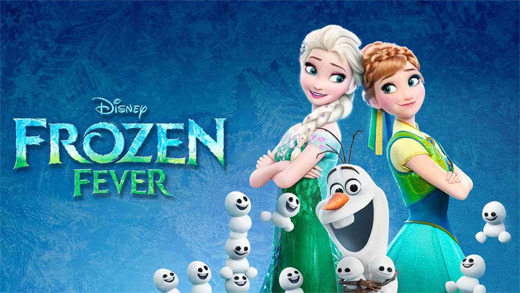
In a show of eagerness, Disney gave themselves a standard four-year production window. Fans and investors alike were expecting Frozen II in theaters by November 2019. Surely, such optimism would in no way backfire.
Chris Buck and Jennifer Lee, writers and directors of the original Frozen, returned to helm Frozen II. The duo branched out, onboarding other official writers. This included storyboard artist and animator Marc Smith. Also joining were Frozen’s soundtrack mavens Robert and Kristen Anderson-Lopez. The award-winning songwriters were no longer consulted just for musical needs. The husband and wife team were contributing story beats as well.
Perhaps five writers were needed to ensure quality. Perhaps it contributed to the increasingly layered and complex plot. Perhaps because the two initial writer/directors were detained with other duties. In 2018, partway through production, Lee was promoted to Chief Creative Officer of Disney Animation.
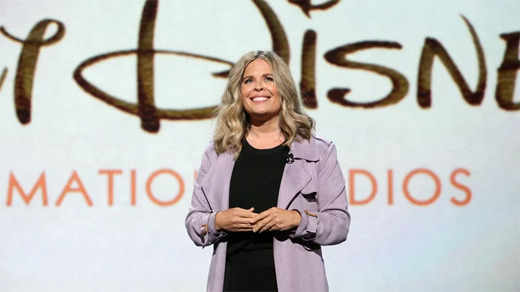
In the past, I’ve lauded the efforts and contributions of former CCO John Lasseter. I chose my words carefully, knowing full well how his tenure with the company ended. Lasseter, despite his achievements, left Disney on very unfortunate terms.
As CCO, Lasseter’s creative and artistic visions lifted Disney Animation out of a dark age. However, it was his personal behavior that resulted in his departure. Lasseter made frequent salacious remarks and unwanted physical advances towards Disney’s female staff. An ongoing problem, this behavior began when he was at Pixar, and continued well throughout his employment with Disney. He used his power, his authority, and his connections to silence any objection. But after many years and many victims, the secrets erupted. As the allegations went public, Disney removed Lasseter from his role.
Jennifer Lee was promoted to fill the void. This opportunity gave her the dual responsibility of overseeing all of Disney Animation while also continuing to finalize the production of Frozen II. A distracted and overworked director, even one of two co-directors, explains much of the final film.
It was decided early on, Frozen II would be centered on a hook. Elsa would hear a strange, ephemeral voice beckoning her. Four notes, sung across the wind, only she can hear. She’d go on an adventure, trying to find who is calling her and what they want.
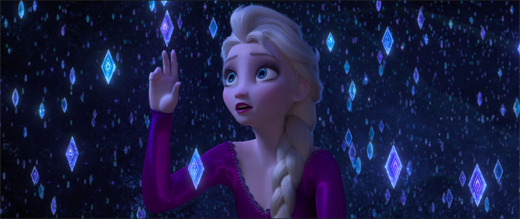
Such a foundation should be great a jumping off point for a screenplay. Except nobody on staff knew at the time who this voice would belong to, or what their relation to Elsa would be. Nor did they decide on these factors in a timely manner. Production continued with the idea left ambiguous and undecided, under the assurance the details would be provided down the line. Without a central plot or direction, development of the story proceeded at an awkward, aimless pace.
Everybody had vague ideas about how the movie should look and how it should feel. Nobody knew what the movie should consist of. All they had were odd story bits and scenery. Songs sung about nothing in particular for no known reason. New characters who had no purpose and no reason for existence. And no central story to tie everything together.
In February 2019, the first teaser trailer was released online. It featured Elsa standing on a beach at night, staring down the crashing tides. She attempts to run across the water, daring to breech the ocean waves that crash on top of her. She’s alone, she’s determined, and she’s fighting nature’s might with all her strength.
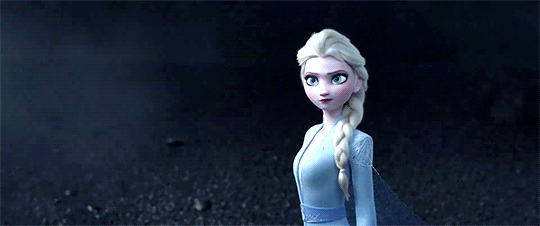

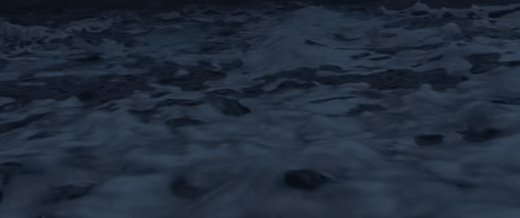
The trailer garnered interest and buzz. Fans all speculated the same things. Why was Elsa alone? Where was she? Where was she trying to get to? Why was she so desperate to combat nature, not taking a boat, or waiting until the waters calmed?
The filmmakers had no answers because they themselves had the same exact questions. After three years of development, this scene, apart from a few isolated test scenes, was the only completed part of the film. The animators had nothing to animate because the story and storyboards were still changing. The filmmakers didn’t know what Elsa was doing, how she got there, or what it all meant. All they knew was that it looked cool. But they used it for the teaser trailer, so they were obligated to fit it in the film somewhere.
Test screenings of the movie were disasters. Child audiences were either bored or confused. The plot was too convoluted, exposition dumps were unhelpful, and scenes went on too long. The film’s tone was too dark and too dry, lacking the childish humor of its predecessor. Much of the film felt hopelessly bleak.

These test screenings forced rewrites all the way to May, 2019. The plot was simplified, humor was added, and the story moved at a more exciting pace. Frozen II was being rewritten six months before the release date.
There is a docuseries on the making of Frozen II available on Disney+. It was likely intended to be a marketing tool, giving audiences even more Frozen content. It unintentionally depicts the desperate path to completion. Disney higher-ups have edited the series to seem like Frozen II was a labor of love, but the stress bleeds through.
It’s clear everyone involved was deeply invested in the project. The problems weren’t an issue of incompetence, arrogance, or limitations. The film just couldn’t coalesce. At a certain point, the motivation was nothing more than “get it done.”
Frozen II is the end result of a marathon session of rewrites, reworks and re-edits. It’s a miracle a film of any regard came from such a Sisyphean effort. If a release date wasn’t already promised, Frozen II would have very likely languished in development hell for years.
Frozen II takes place three years after the events of the previous film. Life has gone on without significant drama or upheaval. Our heroes are happy. Their kingdom is prosperous. Everything seems fine. All until Elsa begins receiving omens. To find answers, she and her colleagues venture to a mythic land up north. There, they must confront their kingdom’s past, discover their family heritage, learn their destinies, and right a wrong generations in the making.

The first thing one notices about the film, setting it apart from its predecessor, is the color scheme. Frozen was set during an unseasonable winter curse. Its hibernal setting prompted landscapes of icy splendor, including snow-draped landscapes and motifs of white and blue.
The sequel is set in autumn. A variety of arboreal colors interact, focused on reds, violets and deep green. The only scenes featuring snow and ice feature Elsa specifically. The name ‘Frozen’ is doing its setting a disservice.

Once again, color theory is employed to great effect. The first film used its color scheme to reflect Elsa specifically. There was a delicate beauty representing Elsa’s fragile mental state, but also a chilling sense of danger, representing her despair and hostility. The autumnal colors of the sequel represents both Elsa and Anna together. Autumn is a time of transition. Before we know the stakes of the plot, we know the the film will be focusing on impermanence and change.
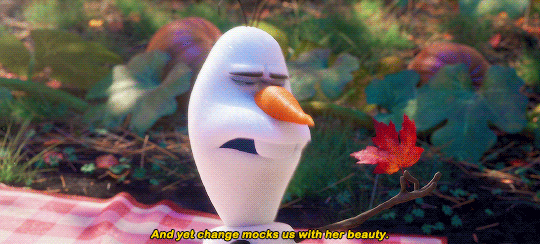
The first change is one of setting. The first movie took place in Arendelle and its surrounding forests and mountains. The sequel removes our heroes from these familiar areas. They move further north to a land called Northuldra.
Arendelle is a rather undefined place. Its unclear whether its a nation, a nation state, or the capital city within a nation. It’s not important. What is important is, Arendelle is set in a fictionalized version of Norway.
A Norwegian setting was chosen purely for aesthetic reasons in the first film. The sequel uses its real-world counterpart for a fuller narrative effect. Northuldra is an area in the taiga biome, sparsely populated, with only hearty flora and fauna surviving. Its sole human residents are foragers, lacking any permanent structures or colonies. The Northuldran people have a relatively small tribe (about 50 people), but a rich culture.
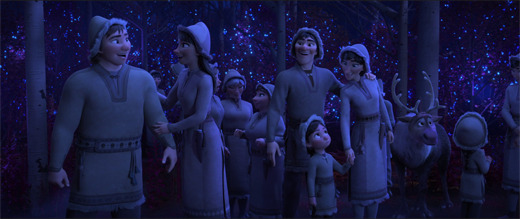
Northuldra is a stand-in for the Sápmi region and the resident Sámi people. Scandinavians and the Sámi live mostly detached lives to each other. Scandinavians prefer the southern portion of the peninsula for its arable farmland. The Sámi prefer the north, where great populations of reindeer live. This passive cohabitation has preserved the Sámi culture and lifestyle.
The plot of Frozen II uses this cultural relationship as fodder for its own plot. The Arendelle citizens represent Norway, while the Northuldrans represent the Sámi.
Acknowledging Disney’s poor history of depicting indigenous cultures onscreen, the Sámi insisted on a cultural ambassador opportunity. The filmmakers accepted, sending several representatives to Sápmi. They absorbed the culture, made diligent notes, and shared preliminary character models and story bits. This ensured what appeared onscreen was both respectable and accurate.
Also part of the contract, Disney would produce an officially dubbed version of Frozen II in the Sámi language. A genuine gesture of goodwill, and also a clever contract rider. An ignored international demographic now had a movie that would be uniquely theirs.
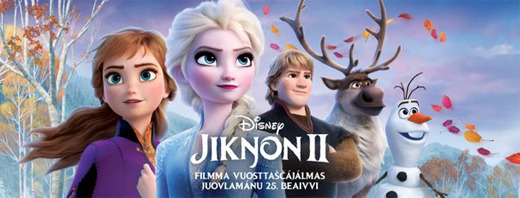
The Northuldran are depicted as an unknown culture to our heroes. They’re simple, but not primitive. They’re interesting, but not a sideshow. They’re seen as rustic and rural rather than uncivilized or savage.
There are many ways to read the differences between the two groups. Their clothing is one of the most interesting. Anna and Elsa wear dyed fabrics, embroidered with intricate designs. These outfits are clearly handmade and personalized for them. Even Kristoff, laden in fur and leather, is far departed from mere hunting and trapping. Rugged and durable, they’re manufactured all the same.
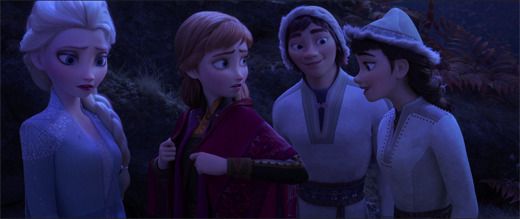
This contrasts against the Northuldran, all of whom wear a uniform, practical outfit. The prime focus of clothing is not of fashion, but functionality and unity. One type of outfit for one tribe with no extraneous details. If it rips, it can be mended. If it’s ruined, it can be replaced. If more are needed, more can be made.
But this uniformity is not depressing or stifling. In the simplicity, there is beauty. The dulled browns and grays emphasizes a tapestry-like focus to needlework. It’s admirable as a craft, not as couture. What’s more, the monotone appearance emboldens the scenery and the world around them. The people look clean, simple, and humble to emphasize instead the resplendent glory of their forest home. Again, the autumn setting working to the film’s advantage.

One of the most beautiful moments of the film isn’t visual, but musical. Upon Anna and Elsa learning their mother was Northuldran, the entire populace welcome their estranged sisters wholly into their ranks. They do so with a choral performance, strongly implied to be an honorable cultural tradition (Olaf steps on this tradition, but only for a second before the film cuts away).

Although Anna and Elsa are unfamiliar with it, we the audience recognize the song. This is the same choral chant that accompanied the title card of the first Frozen and the studio logos of the second.
But this isn’t a lazy bit of recycling. The filmmakers weren’t considering a canonical use when the number was first performed. They just needed something that sounded Norwegian and somewhat mystical to introduce the Frozen title card. They used a traditional folk song, and that was that.
In the sequel, the piece is given a new context, one inside the film world’s universe. This abstract orchestration has been given a definition and a purpose. It’s an amazing bit of retroactive connectivity that makes the world of Frozen and Frozen II seem like a cohesive, defined unit.
While the score and music are both grandiose accompaniments, nothing quite reaches the heights of its predecessor. The major problem is, Frozen II’s soundtrack is treated as a retread, not a continuation. Many of this film’s big numbers seem to mimic the first film, trying to replicate its success. “Some Things Never Change” is the follow-up to “For the First Time in Forever.” “When I am Older” is the partner of “In Summer.” “Reindeer are Better Than People” gets a reprisal before its spun into a much more bombastic original work.

Elsa gets two numbers, both hoping to copy the success of “Let It Go.” “Into the Unknown” and “Show Yourself” both demonstrate the range and power of Idina Menzel’s voice. Both demonstrate Elsa’s magical abilities front and center. Both hit emotional high notes, highlighting Elsa’s psyche and confidence. Both feature grand demonstrations of animation, letting fantasy visuals of snow and ice accompany the music.
“Show Yourself” goes one step beyond emulation. Just like “Let It Go,” Elsa once again constructs a palace out of ice. Once again she lets her hair down and manifests a glamorous gown. Once again the lyrics serve dual purpose, reflecting both Elsa’s current place in the narrative and her subconscious feelings. They may have been eager to replicate the success of “Let It Go”, but this is desperate.

Frozen II establishes its themes early, the same way a musical puts its auditory motifs into an overture. It introduces everything blatantly, even awkwardly, all sequentially in the beginning. It’s not until later, after the story develops and these themes return, do we see their significance. Until then, it just seems as though everyone is speaking in cryptic platitudes.
Anna and Elsa’s mother sings a lullaby whose origins and significance are a secret. Their father tells a bedtime story from his past which he describes in great detail except for the portion regarding himself. Repeated talk about the comfort of familiarity portends a tragic irony. Anna adopts the tenet of doing the next right thing despite the suggestion not being given to her specifically. Olaf insists water has memory completely unprovoked. The apparitions from “Into the Unknown” are literal displays of what’s about to come. There’s foreshadowing, there’s preludes, and there’s whatever’s going on here.
After this prelude to a means, the movie begins in earnest. Arendelle is besieged by strange natural phenomena. Darkness, droughts, strong winds and earthquakes befall the city, forcing an evacuation. Elsa recognizes this as an ultimatum. She’s not only being beckoned to travel north, she’s being forced.
This is our first insistence that Frozen II is departing from its predecessor. The tonal theme shifts wildly. Our fantasy adventure is turning into a tense, atmospheric drama.
Up north, our heroes are tasked with passing through a mist that has isolated Northuldra for years. Not an ordinary fog, this is a magical forcefield. Only Elsa has the ability to pass through, bringing her companions with her.
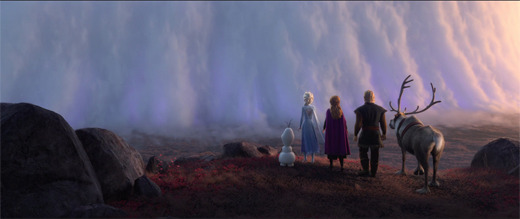
The impenetrable boundaries. The feeling of imprisonment. The unfamiliar environment. The lack of sky. The strange colors. The impossible wind patterns. The rising panic. The threat of separation. The sense that everyone’s being watched… Don’t let the bright colors and animated characters distract you from the situation at hand. For five whole minutes, Frozen II is coded like a horror movie. This is a film with a singing snowman, but it feels like something made by Alex Garland.
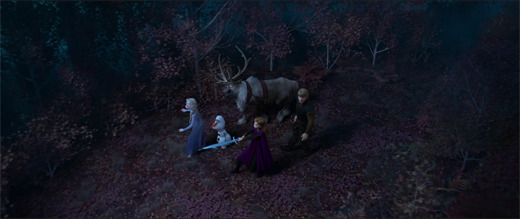
The first film was a personal journey, focusing heavily on Elsa’s character arc. It was an allegorical tale, broaching topics such as mental illness, identity issues, and suppressed trauma. Frozen II keeps its characters mostly static, though the threat of Elsa backsliding into her old ways is on everyone’s mind.
Instead, the focus is on the family history of Arendelle’s royal family. Before, Elsa and Anna’s parents were just parts of a tragic backstory. They were basically stock characters, and didn’t even have names.
Through carefully placed discoveries, revelations and flashbacks, we learn about the life and death of King Agnarr and Queen Iduna. They met the day Northuldra disappeared. They died searching for the same answers Anna and Elsa are now searching for themselves. They don’t know what caused Northuldra to disappear; they don’t understand the magic involved. They suspected the same magic was responsible for Elsa’s powers, and they wanted answers.
But once again, all this was decided after the fact. No one during the production of the original Frozen considered Agnarr and Iduna’s death to have a significant purpose. These new plot details were considered years later, while the old ones were manipulated in order to establish a timeline. As the movie plays out, it’s easy to forget they didn’t die trying to save Northuldra. They were trying to cure Elsa’s magic, still considered a tragic curse at the time of their deaths.
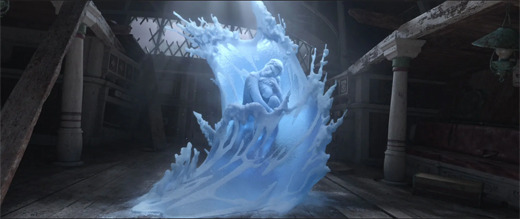
No one in 2013 thought about Elsa’s magical origins or what it meant. Elsa was magic, and that was enough. Frozen II tried to create a story out of nothingness, with nothing to go on. If they had, these facts could have been integrated better, following a better sense of logic.
Why is the Fire spirit an ordinary salamander sometimes when none of the other spirits have animal forms? Why does the Air spirit have no corporeal form at all beyond wind? Why are there several Earth spirits instead of just one? Elsa is the uniting spirit between Earth, Water, Fire and Air, so why does she have ice powers? Ice is a form of water. She should either have the ability to manipulate all four elements, or have a neutral unassociated fifth power.

It’s a Frankenstein sort of filmmaking, joining together different concepts with mismatched results. The film is full of logical inconsistencies and outrageous behavior. Actions don’t necessarily correspond to decisions made. Characters overreact or underreact to plot details.
Why? The troubled screenwriting process. The only concrete elements of the story were markers. The movie needed to hit those markers in a certain order at a certain rate. When the filmmakers couldn’t guide the film naturally to those markers, they forced it. Sometimes effects and causes were decided at two different iterations of the writing process, leaving them mismatched in the final film.
For example, Kristoff heads to a forest glen to ready a romantic proposal for Anna. He’s maybe five minutes away, but Anna considers this departure a form of abandonment and leaves camp without him. Elsa sees lumbering stone giants and turns her gaze towards them as they pass. Anna considers this evidence that Elsa is about ready to impudently storm off. Elsa has a theory that the wind spirits are guiding her to an island. Rather than explain it’s only accessible to her because of her ice magic, she blindsides Anna and Olaf, magically chucking them into the woods, nearly killing them in the process.

The lack of motivations are distracting, but worse is its heavy nature. The first movie was a fairy tale, this one is a tragedy. Many scenes are too stressful or too dramatic for their own good. Elsa and Anna learn about the untimely fate of their parents. They learn their grandfather was an abhorrent monster. They both face numerous threats of abandonment, injury, and death.
To compensate, humor is shoved into awkward places. Focus groups determined the movie was alienating children. Frozen II needed some softer moments. As such, we have many jokes and vignettes clearly added after the fact, not fully integrated with the plot.

Olaf delivers a one-man show, humorously recounting the plot of the first Frozen. Kristoff gets an absurd love ballad that’s straight from the days of hair metal. A Northuldran herder reveals he also uses ventriloquism to make his reindeer talk, just like Sven. Hans is mentioned surprisingly often, each time dismissed with flippant annoyance. Elsa bashfully regrets her affinity for showy drama, twice cringing when reminded of her “Let It Go" performance.
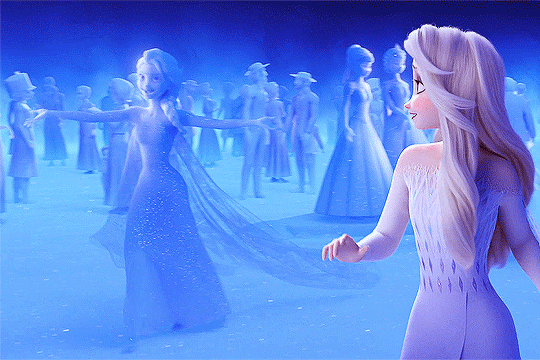
The original Frozen earned acclaim for making Elsa a complicated character. She was a metaphor, prompting a number of valid discussions. Frozen II tries to be bold with its morality as well, but doesn’t fully succeed in either its message or how its delivered.
Elsa and Anna discover that their grandfather, the former king of Arendelle, betrayed the Northuldran people. He built a giant dam for them under the guise of diplomacy. In reality, it weakened their natural resources. This exploitation forced their dependency on Arendelle. When confronted with these accusations, the king assassinated the Northuldran leader, sparking a war between the two civilizations.
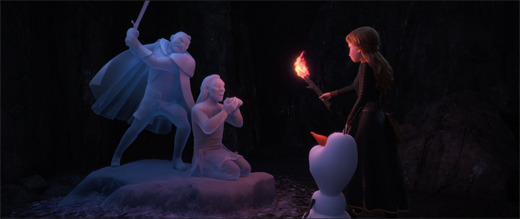
Elsa and Anna, separated during this discovery, each come to terms with a different half of the moral. Elsa’s half focuses on the effects of bigotry. Magic has been empowering for Elsa. It’s coded as a cultural trait, something connecting Elsa to her Northuldran heritage. Her grandfather despised Northuldra for the same reason. Magic is foreign, therefore strange, therefore must be eradicated.
For his intolerance, the king lost everything: his kingdom, his family’s respect, and ultimately his life. Meanwhile, Elsa is actively and emphatically non-racist. She not only excels as a head of state, but she’s powerful, glamorous, popular. Racism is bad, not being racist is good. It’s a very obvious moral, spelled out in no uncertain terms.

Anna’s half of the moral is more subtle, and delivered more effectively. Her portion focuses on racial privilege. Her grandfather’s misdeeds were heinous, but she had no knowledge of them until this point. She has, however, reaped its benefits every day of her life. Her royal title, her wealth, Arendelle’s prosperity, her loving parents, and her magical sister; everything she has comes from Arendelle gaining from Northuldra’s losses.
Anna’s exposure to tragedy, physical exhaustion, psychological trauma, and emotional pain all culminate here. The line of suffering ends with her, and she is taking drastic measures. Anna needs to make things right, even if it seems irrational or insane. She destroys the dam, even if it means flooding Arendelle.
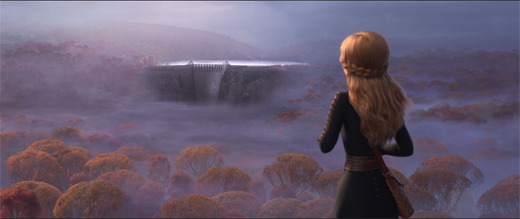
The prophecy called for King Agnarr and Queen Iduna having a child, but they had two. Each needed to prove themselves worthy, independent of the other. Elsa is the one blessed with magical powers, Anna is the one grounded in humanity. Elsa is the one who reunites the magic with Northuldra, while Anna is the one who saves their land. And she does so by destroying the accursed dam.
In the end, she’s justified. Deciding to flood Arendelle was a final test of character. For her actions, the magic forces who have been guiding Elsa intervene, sparing the kingdom, diverting the flood. Not even raising the harbor’s water level. Its unsatisfying knowing that this dramatic sacrifice doesn’t actually involve any sacrifice. The stakes were raised and then lowered without any significance. It’s superficial drama.
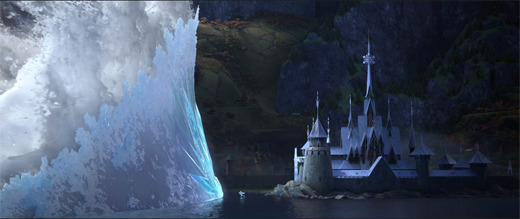
The greatest strength of Frozen II is its quality of animation. While the animation of Frozen was great in its own right, the sequel is in another class. Every single frame is filled with rich detail. The animators focused attention on every small detail. Even things the average viewer would never notice or consider. Wood grain in lumber. Stitching on clothing. Condensation on glass. Skin and hair texture.
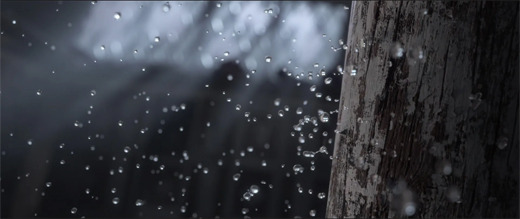
Elsa is still a cartoon character, but she’s a stunningly detailed cartoon character. You can see freckles, musculature, nailbeds, and individual eyebrow hairs. She spends much of the movie in a bodysuit that defies logic; there’s no collar, it just dissipates into nothingness around her collarbone. The fabric turns into adhesive sequins that turn into skin. And yet, all one can do is admire how each of those sequins are rendered with such careful attention.
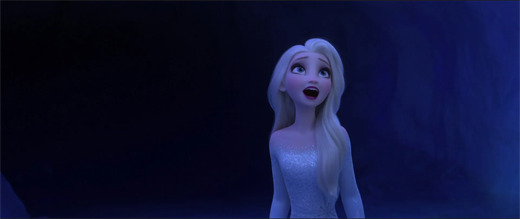
The film looks fantastic. To young audiences, those stellar sights can distract from the story which they’re almost guaranteed not to follow.
This is a film where two young lovers perform an act of love while their respective nations devolve into war. For their purity, they are spared from a mystical curse that secludes the warring participants and the land from the outside world. The progeny of the two innocents will be a legendary fifth element, with the ability to control and manipulate ice and snow. This gift will allow her to one day unite the elements, allowing her to learn the truth, and bring harmony to the warring people. In doing so, she must destroy a dam that’s affected the environment. It was deceptively built as an act of goodwill, but was deliberately detrimental, disenfranchising the populace, making them ripe for colonial exploitation. However, destroying the dam will doom her home empire sitting at the base of the river. All this prompts the moral quandaries of whether children are responsible for the transgressions of their forefathers, and whether an empire built on the oppression of others deserves its modern glory.

This is the only film in the Disney Canon that needs its own page on Sparknotes. And remember, this is after a series of rewrites from test screenings calling the film too complex. This is the simplified version.
The end result of Frozen II is a massive film whose failure is its ambition. It’s a complicated plot with too much fantasy lore among a huge familial backstory. Instead of characters defined by their adventure, the characters are already defined. So they’re further defined to excess, explaining every how, who, and why, forgetting the appeal of fantasy is that things don’t always need an answer. As satisfying as it is to learn the origins and purpose of Elsa’s ice powers, it also robs the character of her mystery.
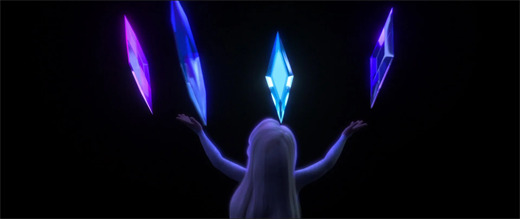
And that in essence was the major failings of Disney’s sequels in 2018 and 2019. They were making follow-ups to stories that didn’t need or anticipate follow ups. There was no story left to tell, so writers forced a story, and it feels forced. We get to revisit old characters we know and love, but what’s new is superficial and clashing. The experience is unrewarding.
While Frozen II did outgross Frozen on an equivalent budget (supplanting it as Disney Animation’s highest grossing film of all time), it killed the studio’s ambition for further sequels. Production was an ordeal, and the film was an overcomplicated mess held together with duct tape and wishes. Had this been a follow-up to any film besides Frozen, things could have been a disaster of Black Cauldron proportions.
To this end, Disney changed its approach to animated sequels. It didn’t matter what the beloved characters were doing, just as long as audiences got to revisit them. If the stakes were that low, there was no point creating a full-length screenplay. Short form content for Disney+ would suffice just the same. After all, Frozen II was made in the first place because the short Frozen Fever was a success.

Frozen II has its strengths, but it’s a confusing and overwhelming experience. Especially considering most of its audience was expecting something simple, or at least comfortable. The movie is overstuffed with ideas, most of which are underdeveloped or disjointed. By making a sequel to their most popular and profitable film, Disney was hoping lightning would strike twice. But in a franchise themed around snow, they should have been more concerned about avalanches.
Beauty and the Beast
Fantasia
The Lion King
Frozen
Snow White and the Seven Dwarfs
Cinderella
Alice in Wonderland
Sleeping Beauty
Mulan
Zootopia
Tangled
The Little Mermaid
Aladdin
Lilo & Stitch
The Many Adventures of Winnie the Pooh
Pinocchio
The Jungle Book
Robin Hood
The Sword in the Stone
Bambi
The Emperor’s New Groove
The Hunchback of Notre Dame
Moana
The Princess and the Frog
The Great Mouse Detective
Big Hero 6
101 Dalmatians
Bolt
The Three Caballeros
Lady and the Tramp
Frozen II
The Rescuers Down Under
Atlantis: The Lost Empire
Wreck-It Ralph
The Fox and the Hound
Fantasia 2000
Peter Pan
Dumbo
Hercules
Meet the Robinsons
Brother Bear
The Black Cauldron
Melody Time
Oliver & Company
Treasure Planet
Tarzan
The Rescuers
Pocahontas
Saludos Amigos
The Adventures of Ichabod and Mr. Toad
Winnie the Pooh
The Aristocats
Ralph Breaks the Internet
Dinosaur
Fun and Fancy Free
Make Mine Music
Home on the Range
Chicken Little
#Frozen ii#Frozen 2#Disney#walt disney#Walt Disney Animation Studios#disney studios#Disney Canon#film analysis#movie review#Film Criticism
61 notes
·
View notes
Text
as a long time fan of supergiant games and as someone who was obsessed with greek mythology as a child, i am EXTREMELY pumped about hades II. but also very curious about the new main character’s design. i feel like sgg (really, jen zee specifically) usually does a really good job of telegraphing their designs so that if you know the most basic things about a god, you can recognize them on site based on their design.
from the shape language to the posing to specific visual elements, they make sure that even at a quick glance the characters are not only distinct from one another, but have enough references to their domain and mythology that they are very recognizable.

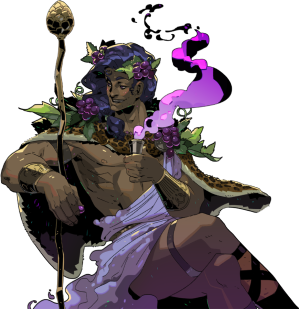
i think demeter is one of my favorite indicators of this and one of my favorite hades designs over all. she’s not interpreted in the way a classic demeter is, and that’s part of what’s perfect. she’s been built at with little hints and references in other characters’ dialogue that paint her as critical, overbearing and not exactly trustworthy. and when you see her you’re like, “what, this is the goddess of the harvest?” with the absence of persephone and her casting the earth into famine, it makes sense that she doesn’t look bountiful, that her cornucopia (still the classic visual reference to demeter) is empty, her wheat frozen.

but melinoë is different. melinoë is a bringer of nightmares, a goddess of ghosts. her mingled heavenly and infernal heritage manifests in her primary physical trait: a body that is split down the middle, half white and half black. this is basically her most defining physical characteristic (the other being that she wears saffron, which is bougie as hell but not the point), but here is her design from the hades II trailer:

i see the saffron, see reference to her ghostly/undead connections, and there is an element of her half-and-half complexion with those black moon armor (maybe?) coverings on her right arm and leg. but when i first saw this design i thought she was an original creation (like zagreus*), not an existing god. i’m interested to see if this means they’ll be changing core parts of her mythology (and to see if that’s reflected in her design) and to see what direction she’s headed in but really this whole long post has just been building up to me saying
WHY DIDN’T THEY GIVE HER SPLIT DYE HAIR
PLEASE IT WOULD HAVE BEEN SO PERFECT
almost every visual interpretation of melinoë, even if they don’t split her body into white and black halves like a white and black cookie, gives her a split dye. and maybe they wanted to avoid what everyone else was doing, but i feel like melinoë is unknown enough that that isn’t really a big deal. idk. i just think it would be neat. that’s all.
(*yes i know there is a zagreus in greek canon that is the first iteration of dionysus and is the son of persephone and zeus but i feel like game zagreus resembles his mythological counterpart so little that he’s basically an original creation, and maybe they’re doing the same with melinoe! since she is also technically the child of zeus and persephone**)
(**depending on the canon it’s either zeus disguised as hades or zeus and hades are two aspects of the same being)
2K notes
·
View notes
Text
Застывшие во времени люди и боги итальянского скульптора Арриго Минерби Феррары.
People and gods frozen in time by Italian sculptor Arrigo Minerbi Ferrara.




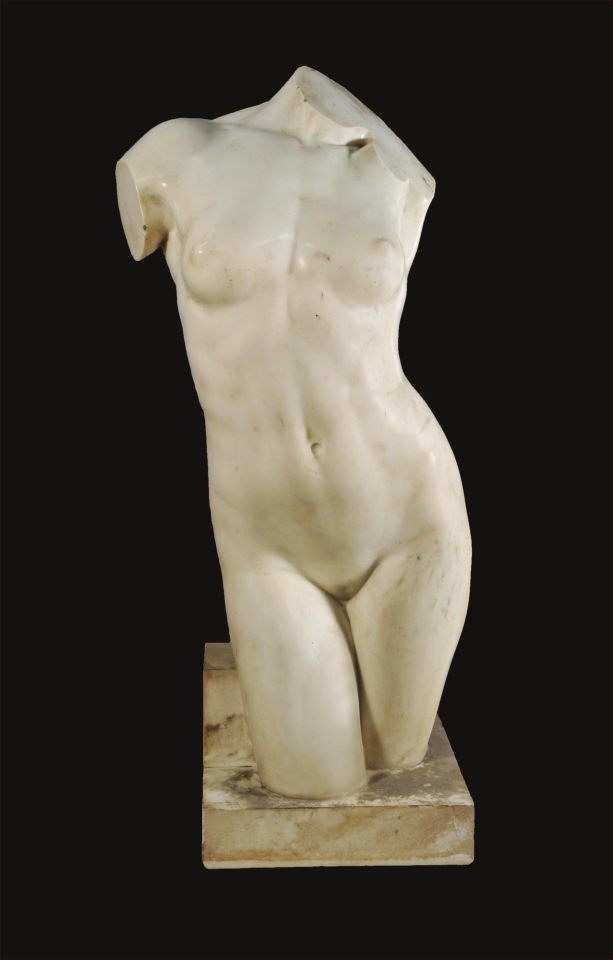
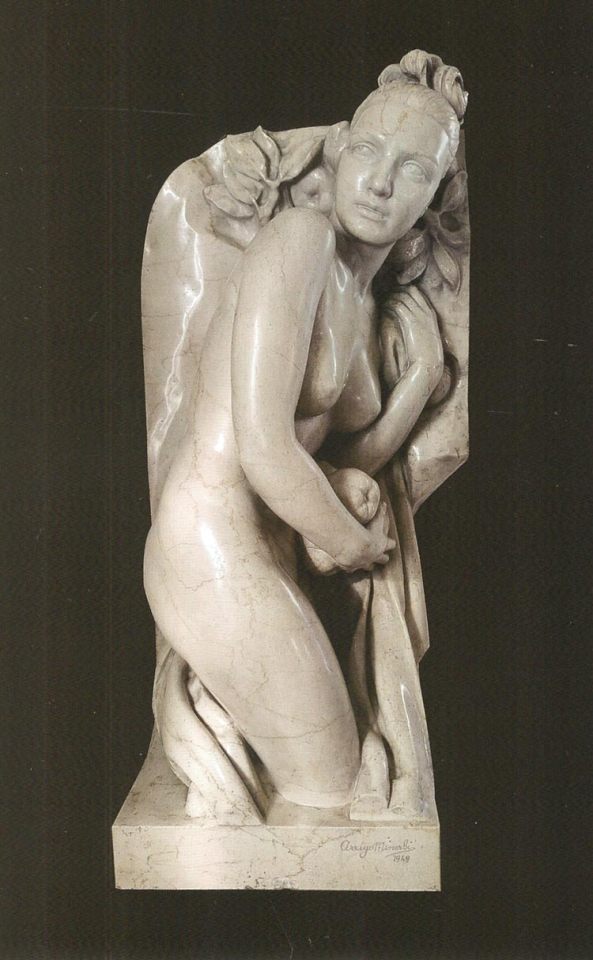







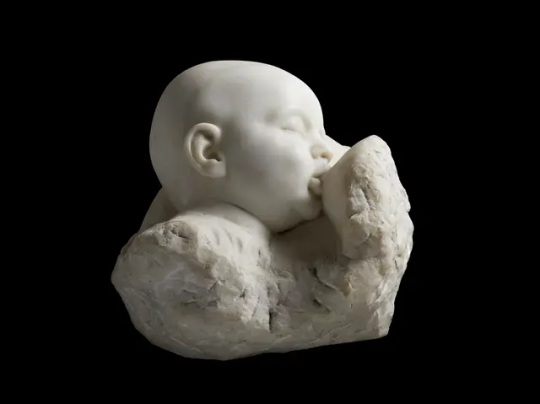
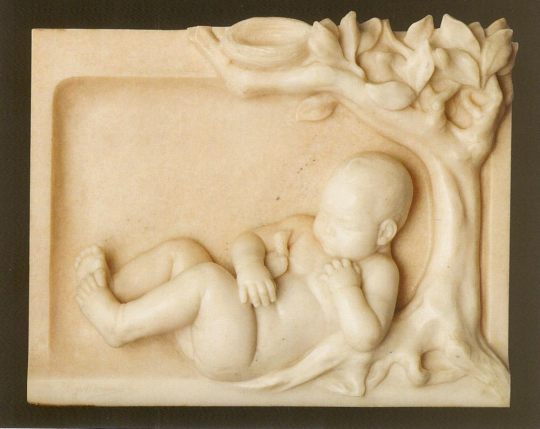
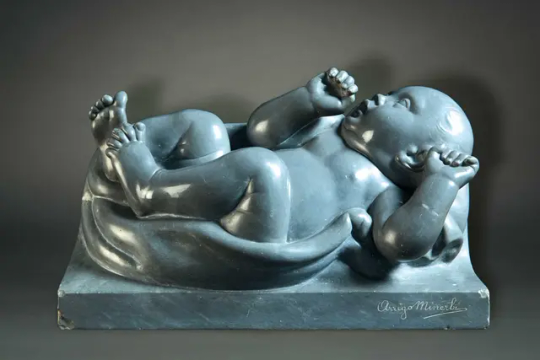
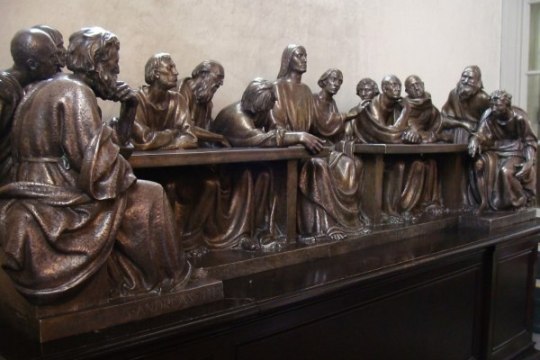
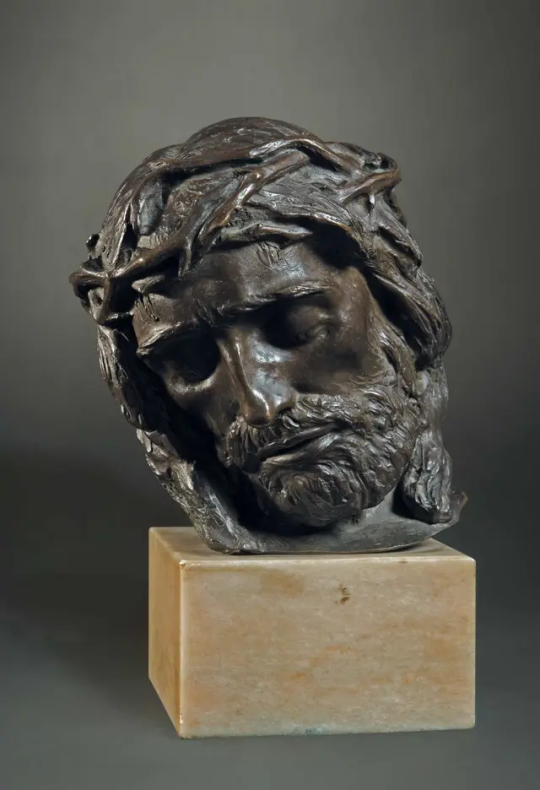
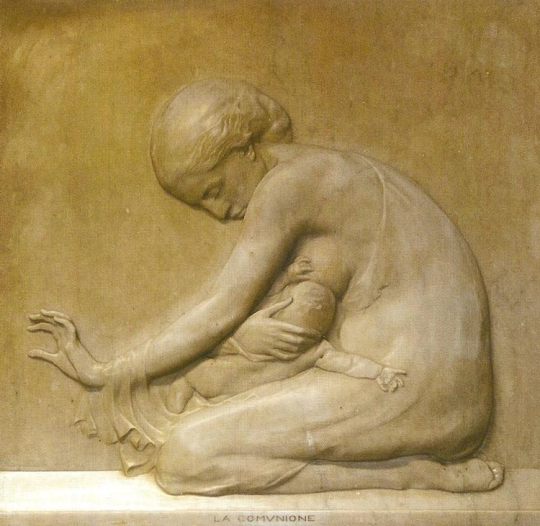

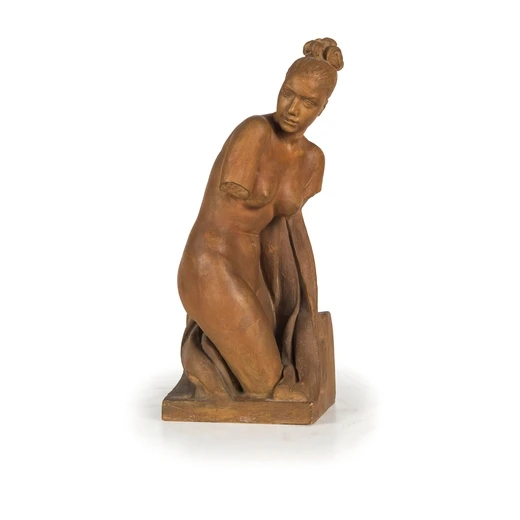

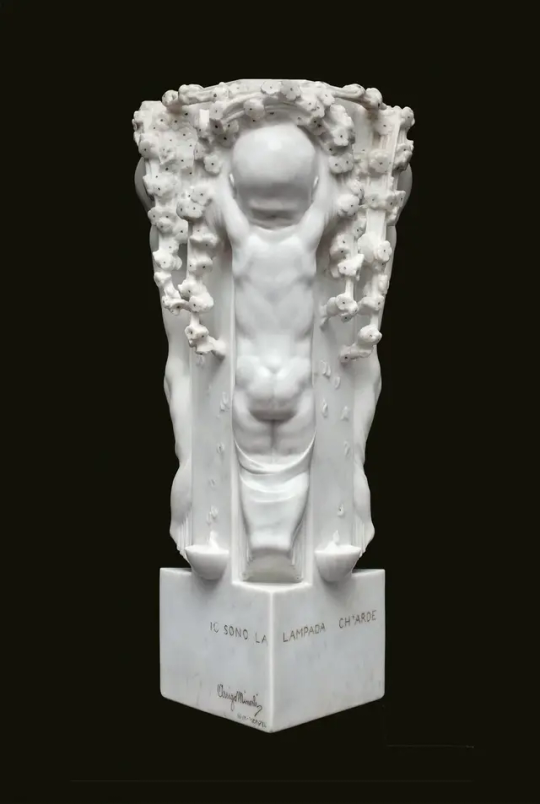


Арриго Минерби ( 10 февраля 1881 , Феррара — 9 мая 1960 , Падуя ) — итальянский скульптор . Родился 10 февраля 1881 года в еврейской семье в Ферраре , под руководством скульптора Луиджи Леньяни посещал курсы декоративно-прикладного искусства в Ферраре в школе Доссо Досси . Он работал керамистом, декоратором, тренером и штукатуром в Ферраре, во Флоренции (где он совершенствовал свое мастерство в Академии изящных искусств ) и в Генуе (из этого периода следует помнить гигантского Нептуна из железа и бетона 1910 года в Монтероссо ).
В возрасте 35 лет он переехал в Милан , где в 1919 году устроил для критиков и публики выставку своих работ в галерее Пезаро. Эта выставка также успешно гастролировала до 1920 года. Regionale di Ferrara, возвращение в Милан в 1922 году перед поездкой на Primaverile Fiorentina, и, наконец, его пригласили на Вен��цианскую биеннале , где он выставил свою серебряную группу «Тайная вечеря» (сейчас в Соборе Осло ). 14 июня 1925 года в Парко делле Римембранзе на Бондено он представил свой «Мадре» как памятник погибшим в Первой мировой войне. Он стал почетным гражданином Бондено, хотя это было отменено из-за фашистских расовых законов и повторно присвоено только в 2004 году. После Второй мировой войны Минерби работал в основном для католических церквей и кладбищ (в Милане, Риме, Рапалло , Пьяченце , Падуе , Коппаро).
Arrigo Minerbi (February 10, 1881, Ferrara - May 9, 1960, Padua) was an Italian sculptor. Born on 10 February 1881 into a Jewish family in Ferrara, under the guidance of the sculptor Luigi Legnani he attended arts and crafts courses in Ferrara at the Dosso Dossi school. He worked as a ceramist, decorator, trainer and plasterer in Ferrara, in Florence (where he perfected his skills at the Academy of Fine Arts) and in Genoa (from this period the giant iron and concrete Neptune of 1910 in Monterosso should be remembered).
At the age of 35, he moved to Milan, where in 1919 he staged an exhibition of his work for critics and the public at the Pesaro Gallery. This exhibition also toured successfully until 1920. Regionale di Ferrara, returning to Milan in 1922 before traveling to the Primaverile Fiorentina, and finally being invited to the Venice Biennale, where he exhibited his silver group The Last Supper (now in Oslo Cathedral). On 14 June 1925, in the Parco delle Rimembranze in Bondeno, he presented his Madre as a monument to those killed in the First World War. He became an honorary citizen of Bondeno, although this was revoked due to fascist racial laws and was only re-granted in 2004. After World War II, Minerbi worked mainly for Catholic churches and cemeteries (in Milan, Rome, Rapallo, Piacenza, Padua, Copparo).
Источник: :wiki5.ru,https://www.artearti.net/mostre/arrigo-minerbi-ritorno-alla-gloria, /it.wikipedia.org/wiki/Arrigo_Minerbi, /vk.com/@bmpage-gigantskaya-statuya-neptuna-v-nebolshom-italyanskom-gorode, //www.artearti.net/mostre/arrigo-minerbi-ritorno-alla-gloria, /www.flickr.com/photos/pivari/21549242499, /www.finestresullarte.info/en/exhibition-reviews/arrigo-minerbi-sculptor-between-ferrara-and-the-italian-culture-of-the-early-twentieth-century.
#искусство#Италия#скульптор#Арриго Минерби#скульптура#Нептун#Тайная вечеря#Мадре#Italia#sculptor#Arrigo Minerbi#sculpture#statue#neptun#The Last Supper#Madre
101 notes
·
View notes
Text
also while I'm on the topic of Frozen II "Show Yourself" should have been the massive hit song with a thousand critical accolades from that soundtrack instead of "Into the Unknown" and I will die on that hill
#yes I KNOW 'Into the Unknown' is the more versatile song and 'Show Yourself' is technically a spoiler song#I DON'T CARE#IT'S BETTER#it's better written; better sung; actually communicates part of the story via song (which is the whole point of a musical's songs)#AND it actually has something to SAY instead of just being a generic 'idk what I'm doing but I don't fit in here' song#frozen#frozen ii
123 notes
·
View notes
Text
Red as Iron [Pt. II]
Pairings: Dad.Bucky x Daughter.Reader
Warnings: Hospitals
Words: 1.0k~
Type: Angsty
______________________
Cold. Iron. Plummeting into a frozen lake, bathed in the water that would bring death upon him. Bucky gasped for breath but it didn’t alleviate the agonizing wrenching in his chest. He ran. His lungs raged for more than air. Answers. Who? Why? He stopped only when he reached the information desk in the emergency room.
“Y.n Barnes—she’s sixteen,” he said quickly, “Brought in— the officer said—”
The nurse nodded, typing away on her computer. “Relation to the patient?”
“Father—Please, is she okay?”
“I’m sorry, but do you have an ID on you so I can confirm?”
Bucky groaned, fumbling for his wallet in his back pocket. He slid his ID onto the counter toward her, and after another agonizing minute, she nodded with a gentle frown and looked up from her computer. She handed him back his ID.
“I’m afraid all I know is that Ms. Barnes was in critical condition when she arrived, but she has been taken back into surgery.”
“Critical condition—Surgery?!” he asked, shaking his head. “What happened?”
“Brooklyn fire department brought her in less than an hour ago, but other than that, I am afraid I don’t know…” she said apologetically. “The doctor will come out and let you know her condition when he is able to. You are free to wait in the waiting room.”
“Isn’t there anything you can tell me?!” he asked, desperately leaning over the counter between them.
She shook her head. “I wish there was, but the only things I know are what is put into the computer.”
Bucky sighed, hanging his head as he pushed himself off the desk and backed away. He couldn’t breathe. Finding a seat in that forsaken place, he sat down and realized just how much effort it had taken just to stand. He leaned forward as a waft of cold air blew over him, resting his head in his hands. He choked on the breaths carving in and out of his lungs. Less than an hour ago. He was on the phone with her just a little while ago. She was—
~~~
The police had found Bucky in the waiting room an hour later. They were only able to give him the basics of what they found. Burglary gone wrong. Y.n called 911 at 3:57 pm. She said she had come home from school and found someone in their home. Things had escalated, and she was stabbed twice. The Brooklyn fire department EMT was on the scene before the PD, but only barely. She was unconscious by the time they arrived and the burglar was gone. They were investigating the scene and getting the video footage from the apartment complex. With a bit of luck, something should come up. They asked him question after question until his mind was going numb with frustration. When at last they finished, they had advised him to stay with a friend, but he had shaken his head, and they left him in peace.
He stared at his phone screen now, looking at the numbers displayed in front of him with disbelief. He thought something was off at first, maybe the police had it wrong, but it slowly sank into his chest.
Recent calls: Y.n Barnes, 4:00 pm.
4:00 pm. She had called him, his sixteen year old daughter, his baby, had called him, bleeding out in their home, afraid. She had called him and told him she loved him, and that he was an amazing father. His lips trembled as a knot swelled in his throat. His phone screen blurred as Y.no’s voice called out to him louder than the chaos of the hospital he was imprisoned in.
“Can’t I just call my dad and tell him I love him?”
He took a sharp breath and shook his head. He should have known. He should have heard it in her voice, in her breathing. He should have known something wasn’t right.
“I’m really lucky you’re my dad. I love you.”
He jumped out of the chair and hurried out of the room. He found a nearby stairwell and shoved open the door, stepping quickly down a set of stairs until he found himself on one of the platforms between levels. He paced back and forth, hand tangling in his hair.
“I just love you, I guess…and I wanted you to know that.”
His hand met the wall, his chest heaved. He leaned against the wall, hands pressed into the plaster as he tried to fathom what he begged to be a nightmare. He wanted to wake up. Dear God, let him wake up.
“I love you too, dad.”
Bucky grit his teeth, hands balling into fists as his heart bore the knife that cut him open. He hung up on her. Why did he hang up? She was bleeding out. Tears began to slip down his cheeks. She’s in critical condition.
“...Goodbye.”
He strangled out a cry as the realization hit him, harsh and ugly, raw as it ripped from his throat. She was saying goodbye. She had called him to say goodbye.
“Oh, God, Baby, don’t do this to me…” he choked. “Please, Babygirl.”
~~~
It took most of his will to remove himself from that stairwell. To crawl back to the waiting room and sit and wait. It took all his strength to remain sane. He wasn’t used to this. This maddening fear. He’d looked down the barrel of a gun, lost the woman he thought he’d see forever with, feared from the moment Y.n was born that he would do something wrong, but it all seemed so little compared to this moment. This was all consuming, rabid. It wouldn’t let him sit still, and he was at the end of his wits with everyone and everything. He couldn’t calm himself.
It took until he was on the verge of snapping before a doctor entered the room and cleared his throat.
“Is there a…Mr. Barnes?” he called and Bucky had never risen to his feet quicker. The doctor motioned him to follow, and Bucky hurried to his side.
“Your daughter is doing well,” he said and a breath of air filled Bucky’s lungs so sharply he had to steady himself against the wall. The doctor continued, “She sustained two stab wounds, one to the left lung which had pierced the diaphragm, and the other to the liver. We were able to mend the damage, stabilize her, and she is in recovery now, waking up from the anesthesia. I can take you to see her.”
“Thank you,” was the only thing Bucky could think to say. And with it, he followed the doctor to the patient recovery ward and to Y.n’s room. He couldn’t seem to get there fast enough, but when he got to the door and the doctor left him, he could barely take a step towards her bed. She was still, but breathing softly, her chest rising and falling in a steady rhythm. There was an IV stuck in her arm, an arm that was now bruised. The trails of purple had crept up her arm, and another bruise blossomed on her cheek just below her right eye. The twisting in his chest eased now that he was there beside her, but slowly following behind it was a burning flame. It ate away at him until it ignited a wildfire. His fists curled into his hands until his nails bit his skin.
He eased his way to her bedside and gently sat on the edge of the mattress. His fingers slipped into her cold ones, and his brows furrowed as he squeezed them tightly. She always hated when her fingers got cold. He pressed her hand in his to let the warmth sink into her own hand. Leaning over, he let his free hand caress the side of her face, over the bruise, as he kissed her forehead, eyes squeezed closed. Gently, he kissed over the bruise as well.
If the cops didn’t find whoever did this soon, he would find them himself. The cops would never solve the case until they dove into the depths of the ocean, dragging his body up in pieces, each weighed down to the ocean floor in cement. They’d each be broken in several places. Natasha would help him do it.
When he opened his eyes again, they held the sparks erupting from struck red-hot iron. Determination burned in the well of his chest, braced in the armor of his ribs. Be them of a prison cell or the red iron gates of hell, he would ensure whoever did this would see bars.
________________________________
part 3
——————————————————
Forever Tags: [Open!]
@bugsbucky @thelovelydreamer17
Red as Iron Tags: [Open!]
(Just adding the ones who wanted the second part here for this one! I can’t access my taglist file at the moment, so I’m sorry if I missed anyone!)
@thebookofyouandi @givemylovetoall @elite4cekalyma @bucky-boo-bear @urdad-hot @canthavetoomuchcoffee
#red as iron#bucky#bucky barnes#james barnes#james buchanan barnes#bucky x reader#bucky x teen!reader#dad!bucky x teen!reader#dad!bucky#father!bucky#father!bucky x reader#dad!bucky x reader#father!bucky x daughter!reader#worried!bucky#worried!bucky x reader#worried!bucky x daughter!reader#bucky x y/n#bucky x you#james barnes x reader#james barnes x daughter!reader
437 notes
·
View notes
Text
Chapter II Summary
2-2
MC is at RAD when they overhear demons gossiping. Some laugh about Mammon being a babysitter but the conversation becomes negative as they decide to eat MC before Beel does and that no one will notice them if they strike now.
Before MC can do anything someone comes up from behind teasing their expression and warning them demons love frightened-looking humans. He addresses them by name and hands them their dropped D.D.D. before telling them there’s no need to be suspicious as he’s also an exchange student. He introduces himself as Solomon.
If MC chooses to ask him for help he tells them they have Mammon and not to worry as he can tell the situation isn’t bad enough that they require his help.
If MC asks how he knows their name he tells them they’re a bit of a celebrity at RAD for not only being from the human world but also because someone as infamous as Mammon is looking after them.
If MC asks if he’s really also a human he laughs and says there are times he’s not sure. He explains long ago he obtained the Ring of Wisdom from someone in a VERY high position and used it to enter into pacts with 72 demons.
He excuses himself and MC heads to their classroom and is greeted by Lucifer who remarks they’ve become a celebrity. MC greets him and he’s glad they survived the first night and asks if they were speaking with Solomon. He tells MC it’s fine to associate with Solomon as he’s another human but to be careful because he’s not to be trusted as he’s the type to subjugate powerful greater demons if given a chance.
MC then has a flashback of Leviathan telling MC that Lucifer has something Mammon would kill to get.
Fun Facts: This is the first chapter Solomon appears
2-4
Continuing from the previous flashback, Leviathan tells MC that Lucifer confiscated Mammon’s credit card because he never stopped using it. He explains Mammon is obsessed with it and treats it like a woman, even calling it his baby. Leviathan is disgusted by this and tells MC they must figure out where it’s hidden and make it seem natural when bringing it up to Lucifer.
In the present, Lucifer asks MC if they’d like to ask him anything.
MC has several things they can ask him. If they ask to know more about Mammon, Lucifer says as his brother he’d like to avoid criticizing him and will keep it to a minimum but then trash talks him and says he’s ashamed he’s his brother.
MC can ask where students keep their valuables and Lucifer suggests if they acquire any their room desk has a lock but it’s too obvious and any thief would look there.
MC can ask what happens when a student’s items are confiscated. Lucifer doesn’t see a reason they need to know but tells them anyway. RAD offers more freedom than most schools but if students have something the council considers concerning it’ll be taken away and is sometimes given back after time has passed.
MC moves on to the next question which is either about Mammon’s weakness which Lucifer admits he knows and can exploit when he wants to, or what is something dear to Mammon which Lucifer states is money and Mammon would have nothing left in life without it.
During the last question, Lucifer mentions having frozen something of Mammon’s which is a clue. He then ushers MC to class as the first bell has rung.
2-6
MC is lying in bed thinking about the brothers and realizes that despite Lucifer stating he had six younger brothers they haven’t met the seventh and youngest of them.
While they lie awake thinking about this, Leviathan texts them to meet him in the kitchen and MC complies and heads there.
MC realizes they are not alone in the kitchen and discovers Beelzebub eating who asks what they’re doing there. If MC states they’re hungry he agrees he is too and if MC tells the truth about meeting Leviathan, Beelzebub is shocked.
Beelzebub asks if they want to talk about anything else and they ask him about the seventh brother. Beelzebub becomes sad and says they must never talk about it in front of Lucifer and he won’t tell them anything because Lucifer will be angry. He bemoans that it’s awful they have to treat their little brother like he doesn’t exist.
2-8
Beelzebub decides it’s not any of MC’s business and leaves in search of more food.
Leviathan calls out to MC and asks again if Lucifer specifically said it was “frozen.”
MC confirms and Leviathan checks the freezer, at first all he sees is ice but then he finds the credit card in a block of ice. He decides to defrost it in the microwave but Mammon arrives, sees what is happening, and gets angry with Levi he might demagnetize the card so Levi stops the defrost cycle.
Mammon starts yelling at him but Levi warns him not to as he has the credit card and Mammon begins politely asking for it back and even begging. Levi says he’s. one of the seven rulers of hell and should be ashamed of how quickly he falls to his knees.
Levi asks Seraphina if he wants the card back but Mammon has forgotten about the figurine which enrages Levi. Mammon agrees but Levi adds the condition that he must make a pact with MC.
Mammon protests and starts scolding MC when Leviathan starts to call for Lucifer and Mammon doubles back and immediately agrees to a pact.
Fun Facts: This the first chapter MC makes a pact
2-10
The next morning at breakfast Asmodeus is laughing about Mammon making a pact with MC. Satan warns him not to laugh because Mammon will get mad but starts laughing himself.
Asmodeus comments he never thought an average human would make a pact with Mammon and never as fast as they did.
Leviathan is excitedly announcing what he bought with the money finally being paid back to him.
Satan comments what is more impressive than making the pact is MC teaming up with Levi to do it. Levi defends himself and states MC hasn’t actually won him over and his true love is still Ruri-Chan.
They ask who MC would make a pact with next. If MC chooses Beel he refuses unless they can give him endless food. If MC chooses Asmodeus he says he isn’t surprised but isn’t the least bit interested. If MC chooses Satan he says it’ll cost them a lot but he might in exchange for their soul.
Asmodeus warns MC they won’t be as easy to tame as Mammon and when he starts insulting him Mammon appears and hits him. Mammon yells at them for calling him names and thinking they’re so great. Satan counters they don’t think they’re great they just think he’s a fool. Mammon demands they not treat him like he’s stupid but they say it’s one thing that won’t change.
Mammon begins to complain about his card being literally frozen and likens it to a dad joke. He says Lucifer may not be a dad but he is old so he shouldn’t be surprised, Lucifer appears behind him sarcastically laughing, furious with Mammon.
2-12
Despite the laughter, Mammon doesn’t realize Lucifer is there until Lucifer responds to his jokes and hits him.
Lucifer congratulates MC on outwitting Mammon and says he and Diavolo will continue expecting great things from them.
Mammon and MC head to class and Mammon complains about Lucifer constantly bringing up Diavolo and that if Diavolo asked him to jump off a cliff he probably would. He then switches to complaining about MC and stating his life has been nothing but one bad thing after another as soon as they show up.
MC demands to be called by their name rather than “human” and when Mammon continues teasing they command him to “stay!” and he protests but does so anyway. He attempts to call them a human but it backfires so badly that he ends up addressing them as “Your Majesty.”
2-13
In the classroom, MC hears demons gossiping about Mammon and MC making a pact. A demon comments that rumors spread more than announcements and complains about the gossip. Diavolo tells him the gossip is a good thing as the more people focus on MC the harder it will be for anyone to attack them.
Lucifer agrees this is a good thing since Mammon is doing a bad job looking after them.
Diavolo admits his surprise to MC that they formed a pact and the demon before agrees it’s no small feat.
MC asks who he is and he introduces himself as Barbatos, the demon who serves Diavolo as his steward.
The three demons begin discussing Mammon and refer to him as the thick-headed child, Lucifer groans he doesn’t even want to think about Mammon as his child as having him as a brother is hard enough.
Someone cuts in a offers his opinion that Lucifer is the most troublesome of the seven brothers. Lucifer asks him if this is a compliment and a child speaks up that it was meant as an insult. Lucifer refers to the child as a Chihuahua which makes him angrier and Lucifer continues teasing him.
Diavolo introduces the two of them to MC. He introduces Simeon as an Angel from the Celestial Realm and Simeon greets MC. Next, he addresses the boy as Luke and inquires if he’s a Chihuahua or an angel. Luke gets upset and brags that he may be low ranking but he reports directly to the archangel Michael. Simeon tells him to not get upset about everything and Luke calms down. Everyone leaves for the next bell leaving MC and Luke alone.
Fun Facts: This is the chapter Barbatos, Simeon, and Luke first appear
2-15
Luke mumbled something to MC but they can’t understand him so he repeats and warns them to never trust a demon especially when that demon is Lucifer. He describes Lucifer as a monster and brute who is uncivilized and he and MC agree he is a sadist.
Back in their own room, MC recalls Luke’s warning and tries to get some sleep. They aren’t able to sleep and begin hearing a voice in the distance calling for help.
They follow the voice who urges them to come quickly and they arrive at a spiraling stairway but are stopped by Lucifer. Lucifer warns them the place is dangerous and not for humans. Any form of protest leads to Lucifer threatening them and reminding them his word is law to them.
MC recalls Luke’s warning and leaves.
2-A
Solomon, Asmodeus, and Satan are playing cards. Solomon wins again making it the 183 wins in a row for him. Solomon insists it wasn’t magic and he’s just an innocent lamb but they remark he’s the most powerful sorcerer in history and are surprised he can say that with a straight face. They comment that had Mammon been there though it might’ve turned out differently as a switch flips in Mammon when it comes to money, almost like a superpower.
They diss Mammon and Solomon asks if they should be doing so considering he’s their elder brother but they both ignore him and Satan tells them he heard something interesting about Mammon.
Satan reveals he heard from Lucifer that MC is trying to make a pact with Mammon they think this is funny but are surprised to hear they’ve teamed up with Leviathan.
Asmodeus asks how Lucifer knows all of this and he reveals it’s because MC spoke to him directly trying to figure out where it was.
Solomon thinks this is hilarious and MC shows a lot of promise, Satan says Lucifer agrees as he gave MC a hint as to where the card might be.
They agree Mammon will probably enter a pact if they find the card and Asmodeus wonders why everyone makes entering a pact such a big deal since he and Solomon have one and so does Barbatos. Satan describes them as a small minority as demons are usually too proud.
Solomon states he’ll have to be careful or MC may beat him to the punch and forge a pact with Lucifer because it’s odd for Lucifer to show interest in anyone other than Diavolo much less a human.
They remark he’s added MC to his favorite person list along with Mammon and Asmodeus remembers something that happened with Lucifer and Mammon a while ago.
2-C
Asmodeus recalls that long ago Mammon got into trouble with a witch and owed money but she would only allow a pact to replace it. Instead of bailing him out, Lucifer made it worse because he thought it was funny but did end up helping him at the last minute. Satan claims he heads a different version where it was ten witches and they wanted to cut his into pieces. They continue sharing stories about Mammon getting into trouble with Lucifer and Solomon remarks they must really love each other.
Satan then agrees to play another game with Solomon prompting Asmodeus to believe Satan must be as big of a masochist as Mammon.
2-12 Hard
Mammon is rejoicing about his credit card returning to him when he notices MC seems weirded out by it and offers to answer any question since he’s in a generous mood. MC asks what he’s going to spend all the money on and he acts offended assuming they assume he’ll spend all the money on himself.
He tells MC that he’s spending the money on a terminally ill nine-year-old girl who needs surgery as he wants the best for her. If MC questions why the girl needs the specific thing she got he makes excuses for it.
2-14 Hard
As Mammon continues his story Leviathan appears and chastises him for lying again. Leviathan announces he knows it’s all because ten witches for fighting for him because Lucifer made it look that way by tampering with their tea-leaf divination.
Mammon argues that it was actually three witches and is surprised to learn it was Lucifer’s fault.
Leviathan reveals he knows that even though Mammon avoided a pact, he’s still subservient to the witches. Mammon denies this but proceeds to get a call which he tries to ignore. When he answers he’s immediately talked into going into the human world with a limousine and insists still that it’s not the witches.
Previous • Next
#obey me shall we date#obey me summary#obey me chapter 2#obey me lucifer#obey me diavolo#obey me mammon#obey me solomon#obey me satan#obey me simeon#obey me leviathan#obey me asmodeus#obey me belphegor#obey me beelzebub#obey me barbatos#obey me luke#obey me rad
58 notes
·
View notes
Text
So I recently caved and watched Hazbin Hotel. I like animation, musicals, and animated musicals, so I feel like I'm kind of obligated to watch this new animated musical cartoon. After watching the show, I can't help but compare it to other animated productions that have also been released within the last year, namely that of Disney's Wish. I have a lot of thoughts, so here's this essay I spent like 2.5 hours writing :D
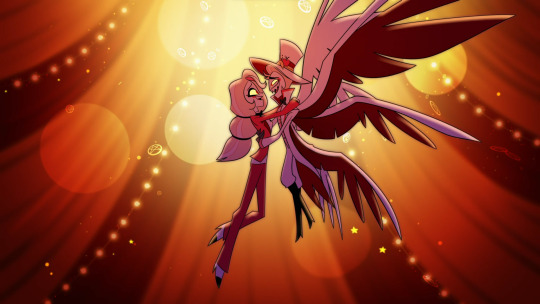
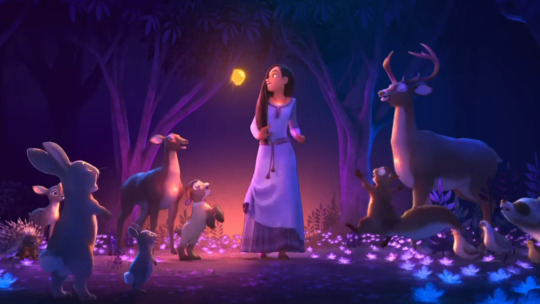
Slight disclaimer, I do acknowledge that Wish and Hazbin Hotel have very different themes, target audiences, production methods, pipelines, all the things. As someone who just enjoys animation, I'm going to disregard this for the most part, largely because I just want to ramble about the animation industry as a whole and probably could for hours.
Hazbin Hotel features a cast of characters trying to rehabilitate the sinners of Hell to save them from dying a second (and seemingly final) death in the afterlife. I have my own thoughts on the show itself, but I generally thought it was good. You can tell there was passion behind it and that they were allowed a lot of creative freedom, rather than having to pander as much to studio higher-ups.
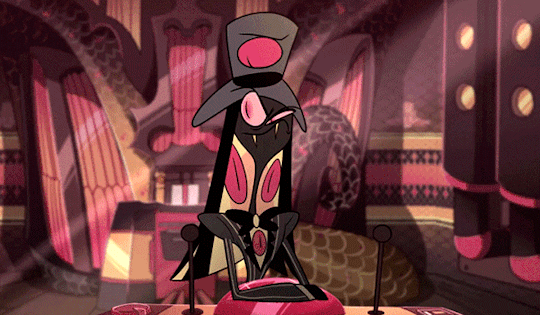
I'm choosing not to summarize Wish and trusting that if you've read this far, you have at least a fragment of an idea of what the movie is about (not that there is much of a memorable plot, anyways). I don't like Wish. The characters are static and flat; there's no growth or character development and we have little to no reason to root for the main character, Asha. The story overall is unmemorable. The animation is fairly lackluster and looks unfinished. Lastly, the songs, one of the most important parts of a Disney animated musical, are just bad and incohesive and don't fit whatever vibe Disney and its producers were going for. I want to add that I don't think these qualms are the fault of the creatives behind this movie, rather, the fault of Disney executives stepping in.
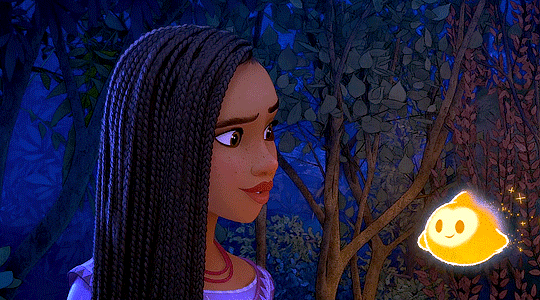
Compared to Wish, Hazbin Hotel has interesting and dynamic characters, a solid art and animation style, and a wonderful soundtrack. Hazbin Hotel, despite being a show about the afterlife, has life and soul to it. This isn't to say I'm a big fan of the show, I do have criticisms of my own. My question is, how does Hazbin Hotel, an animated adult cartoon practically birthed from the internet, manage to be infinitely better than Wish, a movie by fucking Walt Disney Animation Studios? The fact that Disney, the studio behind The Lion King and Beauty and the Beast (or even more recent things like Moana and Encanto), is the same studio that produced a movie as flat and lifeless as Wish is baffling to me.

My speculation as to why this show is so much better than Wish is specifically because it was cultivated from random people on the internet who were passionate about their projects opposed to a company like Disney, who made Wish just for money (and to promote their anniversary). Disney has changed from what it once was and no longer takes risks in their storytelling or animation, only pursuing whatever writing, casting, or cost-cutting decisions that will line their pockets best. As someone who grew up watching these movies so much as a kid and learning about animation and storytelling and music from them, it's so disheartening to see any creativity within this corporation be crushed. Walt Disney Animation Studio's latest animated films since 2018 (Ralph Breaks the Internet, Frozen II, Raya and the Last Dragon, Strange World, and Wish) have all been lackluster in one way or another, with Encanto being the one exception. Disney has historically had dips in the quality of it's content, but this new trend in addition to the rise of streaming platforms (and even the introduction of AI) leads me to have little to no hope for Disney's animation going forward. Passion projects such as Hazbin Hotel are what makes me have any semblance of hope for the future of animation as a whole. Seeing one of the leading animation producers dwindle to this extent and kill any creativity brought to the table is just sad.
39 notes
·
View notes
Text

Frozen Through the Years
Yearly Spotlight: 2017
Written by @secretsofthestorymakers
This year, we saw the addition of a new story to the franchise!
Olaf’s Frozen Adventure was released, a 21-minute short prefacing the premiere of the film, Coco. The short featured an entire unique plot and 6 original songs. It starred the original voice actors from Frozen, but had different directors and songwriters.
While it is commonplace with Disney animated productions to have a short film beforehand, 21 minutes is very long run time for a short film. Many fans of Coco, especially in Mexico, felt that having such a long short film before the movie was an insult, and that it should be removed. Disney relented and told film distributors to stop showing Olaf’s Frozen Adventure before Coco.
Despite this, Olaf’s Frozen Adventure still received reviews from critics. They were rather mixed, and yet, it was nominated for Best Animated Special Production, among other awards.
The other big thing in 2017 was the official announcement from Disney that Frozen II would be released on November 27, 2019; fans were happy and excited to finally have a definitive release date. By 2017, many fans were eager for Frozen II as the future of the franchise. Even if they didn’t have many clues as to what Frozen II would be about, it was clear to fans that it would be huge!
Stay Tuned For More
👆🏻 Click above if you want to celebrate the 10th Anniversary of Frozen. The due date is April 12, 2024.
We look forward to seeing your memories ❄️
#frozen10#frozen#frozen 2#frozen 10th anniversary#for you#water has memory#anna#elsa#sven#olaf#kristoff#frohana#frozen fever#ofa#olaf's frozen adventure
38 notes
·
View notes
Text
Disney's Most Hated Villain 10 Years Later

Now when I say "Disney's most hated villain", I don't mean he's the Disney villain that most people hate most, I literally mean he seems to be the villain most hated by Disney themselves. The shots taken at him in Big Hero 6, Frozen Fever, Kingdom Hearts III, Frozen II, and even recently in Once Upon A Studio all seem to suggest that there are some people high up at Disney who just really did not care for this guy, like they blame the ascendance of "twist villains" in Disney movies on him and want to take it out on him, despite how massively successful and popular the movie he was the villain of was and still is. It's just the most preculiar thing. A whole 10 years later and we've finally get another traditional, openly and bombastically evil villain in King Magnifico of Wish, and given how utterly polarizing that movie is turning out to be among all the earliest critics and audience viewers, I have to wonder if he'll now become Disney new punching bag for setting this new course! I swear, there's no pleasing folks these days!
But this post is for some thoughts on him and why I feel a lot of people online still get Hans wrong. He's not the most competently executed and well defined case of a twist villain, nor is he the worst, most bullshit twist villain ever who needed to be excised from the film so Elsa could keep the Big Bad spot. Taking him as he is, Hans is a B grade or C grade Disney villain at most, with lots of character potential even if it doesn't fully come together in the movie itself.
By far the most common and greatest misconception about Hans as a character is the idea that the moment of the reveal that he was an evil villain the entire time, and the very nature of re-establishing and re-contextualizing his character as a villain, is meant to cast him as some devious, manipulative mastermind who was pulling strings for the film's whole present day plot and had ill intent behind his every word and deed, even if that seems contradictory to the character we'd been watching up to that point. This is false. Hans has never mastered the chessboard, only played on it. He had a firmly set goal from the moment he showed up in Arendelle - become its ruler - but he did not have any solid plan on how he was going to make this ambition a reality. So he was winging it the whole movie. I mean, he basically says as much to Anna in that scene yet so many viewers were too distracted by reeling from either shock or confusion over the outing of Hans as the bad guy that they seemed to miss that.




The crux of Hans as an antagonist in the film is that he is a broken soul who grew up miserable and with an absence of love in his life, and it warped him into a high functioning sociopath who can easily detach himself from his heart and emotions, becoming whatever the current circumstance or person he's presently interacting with best requires him to be in the ways that best advance his own interests. He's like the worst possible outcome of what Anna or Elsa could've grown up to be had their childhoods taken an even worse turn. And above all, he is a man of many masks, rarely ever showing his true face. The mask is hollow and flexible, serving as a mirror to whoever Hans is in contact with (His nice, adorkable, and worried moods perfectly match Anna's, his angry and confrontational moods perfectly match Weselton's, his saddened and sympathetic moods perfectly match Elsa's - absolutely none of it is authentic). There's only a select few times we see the mask pulled back and get to see Hans' true face, those times being these moments and shots here:
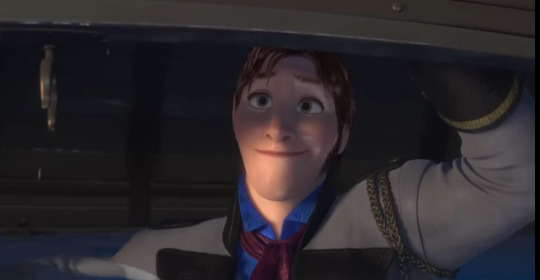
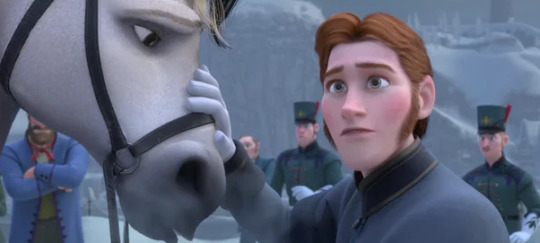

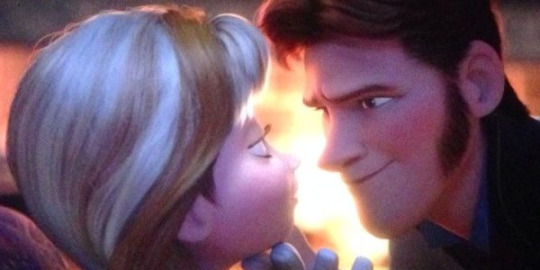

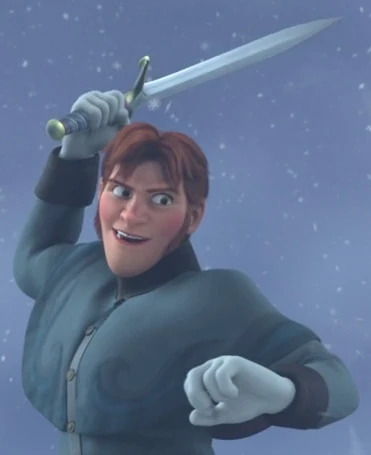
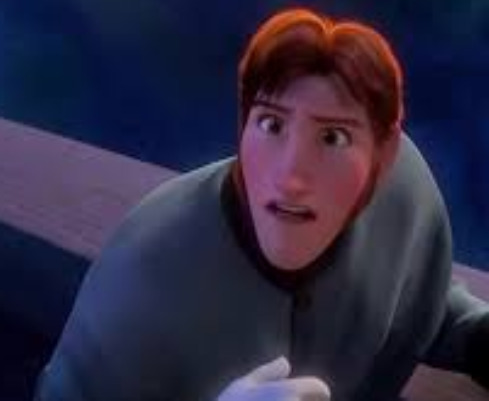
The first shot is him lowering the phony Prince Charming mask and visibly expressing that he was genuinely charmed to meet Anna. No, he doesn't have any "love at first sight" feelings for her, nor is he at the point where he plans on getting close to her and asking for her hand in marriage - it's simply an amused fondness for this quirky, clumsy Arendelle girl he just conversed with.
This next shot is him looking towards the mountain and realizing Elsa is there. In animation, there's even the briefest hint of a grin as he turns and gives orders afterwards, 'cause he wants to seize and exploit this opportunity to play the big hero for Arendelle. Also worth mentioning is that while Hans has no one he loves, he does treat his horse Sitron well. It's pretty much his only friend.
The infamous split second shot where Hans' eyes dart up towards the chandelier before he jumps to action and turns the soldier's crossbow away from Elsa and to the candelier that drops on Elsa. This is Hans as a Xanatos Speed Chess player shown in practice.
That smarmy, mean-spirited grin that comes over his face as he says the infamous, ever memetic line that reveals his villainy.
The shot when he sees Elsa has broken out of her prison cell. Again, the good guy mask is lowered to show he's not pleased.
THIS SHOT. This is Hans fully unmasked and fully unrestrained.
The last we see of him before he's thrown out of the story.
So what's with all the Hans hate, from Disney fans and Disney itself? TV Tropes' page of Character Perception Evolution states this:

I'm not sure how entirely accurate this is since from what I recall, Hans and the twist of his villainy was getting shit on from very early on. I have to disagree that the twist was not properly foreshadowed or at least not in a way that was substantial enough (aside from those "lowering the mask" parts, all of Hans' lyrics in "Love Is An Open Door" put his intentions and the angle he was playing in plain sight, he immediately flip-flops his position when Anna charges him with looking over Arendelle in the sisters' absence, and right before the reveal he straight up lies by omission to Elsa's face by not telling her that he's currently the leading authority in Arendelle and thus has the power to grant her leniency rather than "persaude the other nobles" to do so), but the execution of the reveal with his sudden shift into a totally different character than the one we'd been watching for the previous two thirds of the film absolutely should've been handled better in execution; he needed to slow it down a bit in between saying that notorious line and snuffing out all the lit fires in the room while expositing in a villainous monologue sort of way. The idea that Elsa should've been the villain rather than Hans and Hans should've been the male love interest instead of Kristoph are simply opinions, and I'm not exactly in agreement with them, more on that in a bit.
I've said it plenty of times before and will repeat: to me, the most crippling weakness of Hans as the villain of this film is that the way he's been designed, the very nature of his sociopathic character who always wears masks, mirrors other characters, and comes up with new moves to advance his interests, rendered it very difficult for us to get a good grasp on who he truly is and feel like we'd really gotten to know him by the time the movie was over. And you could make the argument this isn't a flaw so much as it is a necessary evil in order to make Hans' role in the story work as best as it could...but I feel that argument falls flat when Disney/Pixar later gave us a similar twist villain who did what Hans did but better and even more effectively as a full-fledged character in a much shorter amount of screentime.
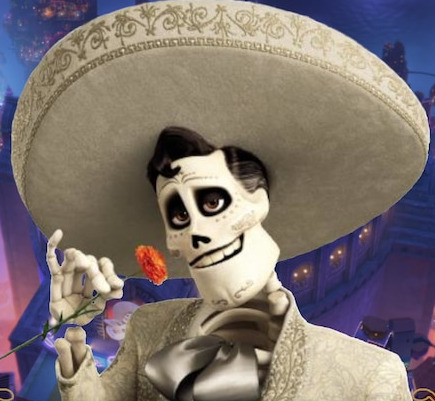
Erenesto De La Cruz, like Hans, is first cast in a positive light and set up as a good guy in the story, though we don't meet him in person until the third act of Coco. Like Hans, he's got an amiable personality and fast strikes up a friendly relationship with the main character. Like Hans, he is very evidently not without genuine decent qualities. Like Hans, the reveal of him as a murderous sociopath who is the true villain of the story is a very shocking moment. And like Hans, he's a big factor in the climax and gets dealt a satisfactory karmic comeuppance. But the thing that set Ernesto apart from Hans is that he doesn't wear any masks to conceal he's "secretly evil". He has a public image that conceals this, yes, but for all the time he's on screen and an active agent in the story, he is his authentic self. All of the nicer qualities we see from him aren't made up, they're real parts of who he is...and who he is just also happens to be a vainglorious sociopath devoid of a conscience who will do anything to anyone under any circumstance in order to "seize his moment" and build up a legacy that keeps him the center of attention even long after he's passed away. While he's still under the mistaken belief that Miguel is his great grandson, before he learns he's actually that to Hector, he has him put away and draws a parallel to how he poisoned Hector to death as he does so - he was never at any point in life pretending to be Hector's best friend, "Hector WAS my best friend", as he puts it. And it just ultimately matters less to him than himself and his own self-interested pursuits. That is a truly chilling villainous character who leaves a strong impression after the movie's over despite how little he was on screen. Hans was almost that, but fell short of the mark because we were left with no clear picture of who he was.
Luckily for Hans, he did get other chances to show more character:
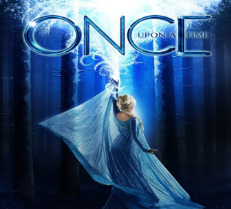


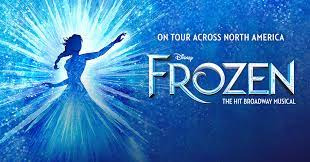

In closing, I will still have to defend Hans' position as the story's only true villain. Yes, Disney going all out with Elsa and her powers driven out of control from her fears as the primary antagonist probably would've been the best option, but once they were set on making Elsa much less of a villain than envisioned, someone needed to play the part in order to make the climax happen and it absolutely could not be the Duke of Weselton, a character so comically unpleasant and openly against Elsa and in it for his own interests rather than Arendelle's that there is no way in Frozen Hell that Elsa would ever be convinced by him of anything like Anna being dead from Elsa's own freezing powers. That lie had to come from someone who could convincingly make Elsa believe it because they'd come off so sincere, someone she'd think could have no possible reason to lie to her. It had to be someone like Hans, someone with a heart so frozen cold that he could effortlessly mimic human emotion he didn't really feel. That is a crucial part of the story's climax that, even beyond the danger to Anna's heart, was foreshadowed from the very beginning.

#Disney#Frozen#anniversary#disney villains#Prince Hans#analysis#opinion#criticism#defense#they wasted a perfectly good character
42 notes
·
View notes
Text
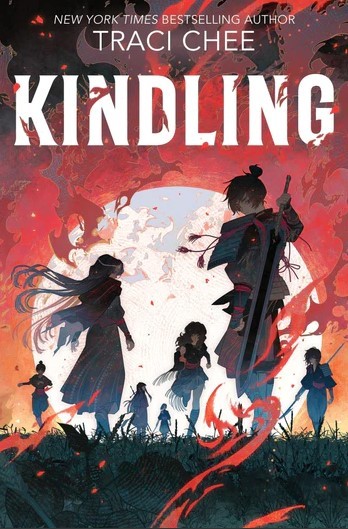




We've got five different books on our radar this week! Which ones have caught your eye?
Kindling by Traci Chee
HarperCollins
Once, the war was fought with kindlings—elite, magic-wielding warriors whose devastating power comes at the cost of their own young lives.
Now, the war is over, and kindlings have been cast adrift—their magic outlawed, their skills outdated, their formidable balar weapons prized only as relics and souvenirs.
Violence still plagues the countryside, and memories haunt those who remain. When a village comes under threat of siege, it offers an opportunity for seven kindlings to fight one last time. But war changed these warriors. And to reclaim who they once were, they will have to battle their pasts, their trauma, and their grim fates to come together again—or none of them will make it out alive.
Everything I Learned About Racism I Learned in School by Tiffany Jewell
Versify
From preschool to higher education and everything in between, Everything I Learned About Racism I Learned in School focuses on the experiences Black and Brown students face as a direct result of the racism built into schools across the United States.
The overarching nonfiction narrative follows author Tiffany Jewell from early elementary school through her time at college, unpacking the history of systemic racism in the American educational system along the way. Throughout the book, other writers of the global majority share a wide variety of personal narratives and stories based on their own school experiences.
Contributors include New York Times bestseller Joanna Ho; award winners Minh Lê, Randy Ribay, and Torrey Maldonado; authors James Bird and Rebekah Borucki; author-educators Amelia A. Sherwood, Roberto Germán, Liz Kleinrock, Gary R. Gray Jr., Lorena Germán, Patrick Harris II, shea wesley martin, David Ryan Barcega Castro-Harris, Ozy Aloziem, Gayatri Sethi, and Dulce-Marie Flecha; and even a couple of teen writers!
Everything I Learned About Racism I Learned in School provides young folks with the context to think critically about and chart their own course through their current schooling—and any future schooling they may pursue.
Snowglobe by Soyoung Park & translated by Joungmin Lee Comfort
Delacorte Press
In a world of constant winter, only the citizens of the climate-controlled city of Snowglobe can escape the bitter cold—but this perfect society is hiding dark and dangerous secrets within its frozen heart.
Enclosed under a vast dome, Snowglobe is the last place on Earth that’s warm. Outside Snowglobe is a frozen wasteland, and every day, citizens face the icy world to get to their jobs at the power plant, where they produce the energy Snowglobe needs. Their only solace comes in the form of twenty-four-hour television programming streamed directly from the domed city.
The residents of Snowglobe have fame, fortune, and above all, safety from the desolation outside their walls. In exchange, their lives are broadcast to the less fortunate outside, who watch eagerly, hoping for the chance to one day become actors themselves.
Chobahm lives for the time she spends watching the shows produced inside Snowglobe. Her favorite? Goh Around, starring Goh Haeri, Snowglobe’s biggest star—and, it turns out, the key to getting Chobahm her dream life.
Because Haeri is dead, and Chobahm has been chosen to take her place. Only, life inside Snowglobe is nothing like what you see on television. Reality is a lie, and truth seems to be forever out of reach.
Translated for the first time into English from the original Korean.
Hope Ablaze by Sarah Mughal Rana
Wednesday Books
All My Rage meets The Poet X in this electric debut that explores a Muslim teen finding her voice in a post-9/11 America.
Nida has always been known as Mamou Abdul-Hafeedh’s niece - the poet that will fill her uncle’s shoes after he was wrongfully incarcerated during the war on terror. But for Nida, her poetry letters are her heart and sharing so much of herself with a world that stereotypes her faith and her hijab is not an option.
When Nida is illegally frisked at a Democratic Senatorial candidate’s political rally, she writes a scathing poem about the politician, never expecting the letter to go viral weeks before Election Day. Nida discovers her poem has won first place in a national contest, a contest she never entered, and her quiet life is toppled. But worst of all, Nida loses her ability to write poetry. In the aftermath of her win, Nida struggles to balance the expectations of her mother, her uncle, and her vibrant Muslim community with the person she truly wants to be.
With a touch of magic and poetry sprinkled throughout, Sarah Mughal Rana's Hope Ablaze is heartbreaking, often funny, and ultimately uplifting, not only celebrating the Islamic faith and Pakistani culture, but simultaneously confronting racism and Islamophobia with unflinching bravery.
Tender Beasts by Liselle Sambury
Margaret K. McElderry Books
Sunny Behre has four siblings, but only one is a murderer.
With the death of Sunny’s mother, matriarch of the wealthy Behre family, Sunny’s once picture-perfect life is thrown into turmoil. Her mother had groomed her to be the family’s next leader, so Sunny is confused when the only instructions her mother leaves is a mysterious “Take care of Dom.”
The problem is, her youngest brother, Dom, has always been a near-stranger to Sunny…and seemingly a dangerous one, if found guilty of his second-degree murder charge. Still, Sunny is determined to fulfill her mother’s dying wish. But when a classmate is gruesomely murdered, and Sunny finds her brother with blood on his hands, her mother’s simple request becomes a lot more complicated. Dom swears he’s innocent, and although Sunny isn’t sure she believes him, she takes it upon herself to look into the murder—made all the more urgent by the discovery of another body. And another.
As Sunny and Dom work together to track down the culprit, Sunny realizes her other siblings have their own dark secrets. Soon she may have to preserve the family she’s always loved or protect the brother she barely knows—and risk losing everything her mother worked so hard to build.
#kindling#everything i learned about racism i learned in school#snowglobe#hope ablaze#tender beasts#new releases
18 notes
·
View notes
Text
Current Demon List:
Avernus
Acheron
Silent clubstep
Slaughterhouse
Kyouki
Abyss of Darkness
Sakupen Circles
Codependence
Firework
KOCMOC
MINUSdry
LIMBO
The Lightning Rod
Deimos
poocubed
Saul Goodman
The Hallucination
Tunnel of Despair
Edge of Destiny
COMBUSTION
UNKNOWN
arcturus
Oblivion
Hard Machine
Mayhem
Sinister Silence
Sonic Wave Infinity
Tartarus
Solar Flare
walter white
The Golden
Trueffet
Verdant Landscape
Shukketsu
Damascus
Zodiac
Aerial Gleam
Kenos
Keres
Delta
Esfera
Terminal Rempancy
NEUTRA
Critical Heat
Promethean
Fragile
Thinking Space
qoUEO
SUPERHATEMEWORLD
Lotus Flower
Cold Sweat
shimmer
Crimson Planet
Renevant
Sky Shredder
Calculator Core
Cognition
Cosmic Cyclone
Trotil
SARY NEVER CLEAR
Lucid Nightmares
Widestep
RUST
ATOMIC CANNON Mk II
Shardscapes
Akashic Records
DIRECTIONS
RUTHLESS
Instinct
Ragnarok
Congregation
Escape Room
TORN
Descent Into Exile
Launchpad Labyrinth
Silent Club
CORRODERE
Omega Interface
The Rupture
Kappa
The Art of the Blade
Bloodlust
Fog
Jesse Pinkman
Asterios
Terminux
no jokes
CITRA
Sazerix
Gracefully
Awedsy
Knights of Thunder
Coral Cave
Aronia
Pagoda
Deimos
ATOMIC CANNON
Twilight
Jupiter My Favourite
Sigma
Dump
IthacropoliX
The Yandere
untitled unmastered
Nhelv
Neon Skyline
kowareta
FusionDynamix
AKIRA
Ouroboros
Ourwa
Visible Ray
Arctic Lights
Dance of the Violins
Plasma Pulse Finale
Frozen Cave
CHROMA FINALE
SZYSLAK
REPENTLESS
Calamity
FRIDAY
CRIDIUM
Spectrum Cyclone
SAND SAILOR
EGO KILLING
Fragmented
Gustavo Fring
Excruciation Chamber
Aquatic Auroras
Storming Summit
Power Grid
Shutdown
Requiem
of Ambrosia
Eternal Moment
ConTroller
Mirrored Calamity
Sparkling
Collect All Pets
Hyper Paracosm
RANDOM ACCESS MEMORY
Beyond Hell
Omega
Gamma
Spacial Rend
the wiener
Dedohexdragon
Ryft
Cybernetic Crescent
Fever Dream
11 notes
·
View notes
Text
Falling Petals
So. I am working on 4 projects right now, and I swore I wouldn't start another until one of them is done. So I won't. But I couldn't stop thinking about my next project, Falling Petals, a generational story about autism and trauma, and so I'm writing ABOUT it so I can move on and go back to actually writing a current project.
It takes place over 4 generations, and exactly 100 years.
We start with Ira, a Jewish boy born to immigrants right at the start of the Great War. A boy who sees the beauty and the poetry in the world around him, but not in the people. A clever boy who loves learning but has little use for school. Who doesn’t feel pain right and outwardly uses touching hot pots as a party trick to make the other boys admire him, but internally is always seeking sensation. Whose blunt honesty and humorous comments have a certain charm, who knows strange facts and can talk for hours about minute details until the people he initially had laughing and hanging on his words get bored and wander off.
Ira, a boy who came of age during the Great Depression and got left behind as friends went to college or got married. Who told himself he was happy to write poetry, take pictures, and read endless books while working in his father’s store. He charmed the girls who came in but never got past a first date. His few real friends were gone and the neighbors avoided him. He was really alone with only his books, camera, and mitzvot for company. Because, yes, he went to shul every week. He struggled to understand human reasoning, but the rules made sense to him and he followed them more stringently than his parents.
Ira, who his parents gave up on ever marrying until he started to spend time with Joy. She was from his synagogue and, unlike the other girls, she debated him back about philosophy. She wrote her own poetry and read enough to keep up with him. They were soon married, and Ira kept obliviously talking about his own interests and making jokes at her expense, not noticing as she got quieter.
Ira, who amidst the terror of World War II—which he was not drafted into—had four children, three boys and a girl. Ira, who adored the beauty and frozen moments of their lives but himself froze up when trying to connect to them, who wrote poetry and took pictures but then mocked them and criticized them if they ever showed the weaknesses that had failed to serve him.
Ira, who would one day be known as a crotchety old man for doing the same things he had always done.

And then there’s Daniel, born in the middle of the Shoah and always aware of that terror though an ocean separated them. A sensitive child who cried too much for a boy, whose first tormentor was his father trying to make him stronger and whose second was his older brother. A boy who longed to belong with other boys, but found no matter how he tried he didn’t. Who found solace in stories, who devoured comic books and looked forward to shul services every week in a way his siblings didn’t. The people in the stories there felt more like a family to him than his real one.
Daniel, who was eager to grow up but also smart. Who was able to learn and hide his less desirable traits. Who stopped crying and forced all his emotions down, until he began to feel low-level anger all day every day, made worse by loud noises and crowds and new situations. Who carefully watched and mimicked other people until he could come across as friendly and charming on a surface level. Who never let anyone get closer than that.
Daniel, who came of age amidst anti-war protests and the civil rights movement. Who wanted so badly to be involved but had learned never to shake things up. Who wanted to work in a library but became an architect because his father wanted it. Who wanted to be loved so badly he latched onto the first woman to show him affection, a teacher named Poppy, who buried himself even deeper than usual to earn her love, praying he would never blow up in uncontrollable anger this time.
Daniel, who swore he would be better than his father, and was. Who at least spent time with his daughters and never mocked them, but who had never learned to cope with noise and chaos and would unpredictably yell at them for it. Who always hated himself for that after but never told them that. He worked long hours because he had been taught that he could never assert himself for his needs, and this only made him less able to handle life at home. He rarely yelled at Poppy, but took it out on the girls. Especially Shoshanah, who he saw as giving in to the weakness and laziness he had always fought not to have.

Shoshanah, born amidst a time of change and reckoning and standing up for oneself. Who was a sensitive child, but that was allowed as a girl. Who was clever and full of imagination and struggled to make friends but successfully kept one school friend and played constantly and happily with her sister.
Shoshanah, who came of age in a new age of computers and arcades and neon lights. Who still seemed a child, still played with Barbies. Who read a lot and recited lists of facts but got poor grades in school, where she was overwhelmed and bullied. Whose one friend had abandoned her when their interests diverged and whose Wrongness was stark in comparison to her sister who wore hairspray and lipstick, read magazines, and went dancing with boys. Shoshanah, who still wanted to play games and make up stories and was too old to be this sensitive and hated going out in public and covered her ears at loud noises. Who found solace in novels, in writing stories, and in the familiar prayers at shul with the familiar tunes that made her feel safe and loved.
Shoshanah, who went to college all excited to learn about psychology because she didn’t understand people but was fascinated with them. Who dropped out in shame 3 years later because she couldn’t handle the social aspect or keep up with the homework. Who had to go to her sister’s law school graduation while she still lived at home and worked as a stocker at the grocery store. Who still collected Barbies and wrote novels on her grandfather’s old typewriter and spent her time alone. Whose clothes never quite matched and were always too loud.
Shoshanah, who discovered independence by living with a roommate at 30, found that she could handle responsibility when it was shared and friendship when it wasn’t teenage. Who got an entry-level position at the library and never wanted to leave. Who knew she could never handle having children, but eventually found herself love with someone who got her.
Shoshanah, who saw herself in her baby niece and swore she would never learn to hate herself for who she was.

Naomi, born into a world of rapidly changing technology where there was not even a family computer in the house the year she was born but by high school she would own her own laptop and iPod. Who never seemed able to keep up with the speed of things she wasn’t interested in, but argued rapid-fire when she understood the details. Who grew up too sensitive to sound, to light, to the way people looked at her when she didn’t know the right answer in conversation.
But also Naomi, who learned to wear headphones with no music so the world didn’t hurt. Who lived in pajama pants and long skirts and never jeans. Who cut her hair short at 12 and never went back. Who learned from her aunt that this was ok, that she was clever and beautiful. Who never felt so clever as when she went to Torah study and argued with grown adults about the finer details.
Naomi, who came of age in a world of smartphones and accommodations and who learned to advocate for herself, who got a degree in philosophy but became a book illustrator. Who shaved her head so she never had to touch her hair again, dated several women until she found one she never wanted to hide from. Who set reminders on her phone for every little part of her life, wore “actually autistic” pins in public, was never afraid to spin around when she was happy.
#I am so excited to work on this one#couldn't right now anyway though because I have to do the historical research#but also I need this story to exist SO badly#moshke writes#writeblr#falling petals
6 notes
·
View notes
Photo

Though angelic pop anomaly Aurora hails from Norway, it can feel like she was beamed here from another planet, an alternate universe, or at the very least, another time. A superstar with an otherworldly aesthetic, a special bond with nature and millions of followers on Instagram, Aurora is so enigmatic, decoding her is an almost impossible task. Still, we cannot help but try
Aurora is sitting in her bedroom, drinking a dark liquid from an elaborate chalice. “This is cola, by the way, not wine,” she clarifies, giggling. The Norwegian artist’s signature viking-meets-anime haircut frames her angelic face, which fills my screen. Behind her, beaded vintage purses and a dramatic silver gown cascade from the wall. Also in frame: a cabinet full of teas and spices and a picture of what appears to be Mary and baby Jesus.
Aurora is six minutes late, which she is profoundly apologetic for. She had been on top of a mountain in the rain and had to blow-dry her trademark cut before meeting with me. “It’s such lovely weather today. Really small raindrops from the sky,” she says. It’s fortuitous that she likes the rain; Aurora, born Aurora Aksnes, lives in Bergen, the rainiest place on Earth. It also happens to be the birthplace of the majority of Norway’s musical talent – DJ-producers Kygo and Alan Walker, electronic duo Röyksopp, even groundbreaking composer Edvard Grieg all hail from the city.
But Aurora’s story begins on the west coast of Norway, in a village next to the Lysefjord, also known as the Fjord of Light. “A lot of nature, a lot of forest, and little people,” she says. “So I grew up quite sheltered.” A self-described introvert, Aurora spent more time as a child within her own imagination than she ever did in school. She did, however, find a great companion in nature, spending hours walking in the forests close to her home. “Nature, she belongs to all of us. And she offers so much tranquillity and peace and silence,” she says, noting that these days we tend to get “very affected by so many worthless things”. “Nature offers some peace. It doesn’t matter who you are when you’re in the forest.”
After coming across her older sister Miranda’s piano in the attic at just six years old, Aurora started writing music . As she explains it, it was her calling because she felt that she’d never heard a perfect song. At nine, she started to write lyrics in English, and at sixteen, after a video of her singing went viral online, she quit school, and went on her first tour. At 20, she released her debut album All My Demons Greeting Me As A Friend, launching an international career. The record features the song “Runaway”, which, despite being six years old, has enjoyed a recent resurgence via TikTok. Today it has more than 500 million streams on Spotify.
This year, at 26, Aurora released her latest album, The Gods We Can Touch, to critical acclaim. While one would certainly identify Aurora as a pop star, she is hardly mainstream. Her music reflects her ethereal essence, somehow embodying the fjords and the mountains around which she grew up. Characterised by dreamy harmonies, her sound both transcends space and time and is rooted firmly in the modern internet pop landscape. Perhaps it ’s this dichotomy that allows her music to live both in the world of Disney’s Frozen II and in the popular video game Assassin’s Creed.
Though Aurora doesn’t recall much from her childhood, aside from “the things I was dreaming about and thinking about”, she does fondly remember her cat, Septimus. It’s the same name she’s given all of her pets – to her mind they’re all the same creature, reincarnated again and again. “To deal with pets dying, it was good for me. I was a sensitive little bean,” she says.
I reveal that I have a pet dog named Doggy, who is nearly 15 years old. As soon as I mention him, Aurora starts to cry, tapping into my impending heartbreak. These days she doesn’t have a pet herself – the lifestyle of an internationally touring pop star doesn’t suit animal companionship. She has, however, made a connection with a crow in the park next to her home. Aurora brings him shiny things, and he brings her gifts sometimes, too.
In addition to Septimus, Aurora also found companionship in her two older sisters, Viktoria and Miranda. She says they are among the few people who understand her, granting her the space and freedom to be herself. “I was very disconnected from people as a child,” she says. “I learned to love most people in my life when I grew up and understood what the essence of family is, and love, and coexisting. Because I was really overwhelmed by just learning to exist in myself as a human.”
Today, Aurora and her sisters are not only best friends, but close collaborators; Viktoria is a stylist and costume designer and Miranda is a hair and makeup artist. The sibling trio collaborated on our editorial. Later, I ask Viktoria over text message what it’s like to work with her superstar sister. “She knows when to leave it to me, and I know when to shut up and do what she wants even though it kills my pride or ego,” she says, adding that Aurora is a “very relaxed boss”. Even over text message, the sisterly bond is apparent – Viktoria signs off with a plant leaf emoji.
“I hate the fashion industry,” Aurora boldly declares when we start to discuss her eight-year long collaboration with Viktoria. “Fashion is important to me – it’s art, and it’s beautiful – but I hate the sad, hidden part of it. It’s so un-transparent and secretive.” Rather than wear items with a nebulous history, she prefers to ask Viktoria to make her clothes. Sometimes she explains her vision, sometimes they draw up designs together. “It’s very loose and free,” she says.
A conversation with Aurora can spontaneously divert to musings on space and time, philosophy, and the human condition. It strikes me that she could have become anything she wanted, but she says she quickly settled single-mindedly on music. “I understood the importance of music quite early, and I connected it in my mind with nature,” she says. “Music is a way to pool what nature is for our souls into something we can hold in our hands, and kind of shape it into something more comprehensible.” Aurora speaks of nature and music as if they are an extension of herself or a language that she speaks fluently. As the thoughts tumble out, the cogs in my mind shift as I try to keep up.
The music she was exposed to early – Bob Dylan, Leonard Cohen, Enya – is a sanctuary for Aurora. These artists offer both a means to self-understanding and a portal for escape. “My brain has sometimes been a good thing and sometimes been a bad thing. It depends on what situation,” she says. “Since I became an artist, it’s always been my goal to offer the same kind of escape.”
Perhaps unsurprisingly, Aurora is not one to focus on the superficial or mundane. “It doesn’t matter if you get likes or if you’re one centimetre skinnier in your arms. Or if you have a pimple on your forehead. We know it doesn’t matter, but we still let it affect us so much,” she says (for the record, Aurora gets many likes – she has 2.3 million Instagram followers). Instead, she spends her free time studying big ideas: our perception of time, reincarnation and the meaning of life.
Aurora has a charming habit of pointing out concepts she doesn’t understand, as if she’s an alien observing human behaviour. Take, for instance, the way in which we tend to view our lives in a linear series of events - engagement, marriage, children. She chuckles and says that she doesn’t grasp any of it. “I always think of life as me being here, and then life just happens around me all the time and you’re in the middle of the now, which you always own. The now is always yours,” she says, gesturing her hands around her in a circular motion.
“Life is just all a round us, all the time. And we capture the right things sometimes, the right people and the right moments and opportunities.” She pauses to stare out her window towards the mountains, cloudy skies, and miniature raindrops she loves so much, adding, “Earth is my favourite place I’ve been in my life.”
[VOGUE SCANDINAVIA]
105 notes
·
View notes
Text
Eras of a Franchise:
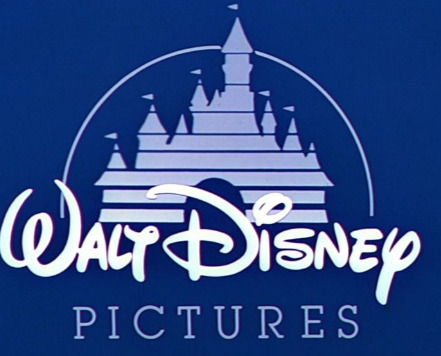
The Origins Era (1923 - 1942)
The studio is founded and creates theatrical shorts (series like Alice Comedies, Oswald the Lucky Rabbit, and Mickey Mouse) until pioneering the fully-animated theatrical movie.
Movies released in this era:
Snow White and the Seven Dwarfs
Pinocchio
Fantasia
Dumbo
Bambi
The Wartime Era (1943 - 1949)
Funds are diverted to aiding the country during World War II, so the movies created during this era are just normal animated shorts packaged together to fill at least an hour runtime.
Movies released in this era:
Saludos Amigos
The Three Caballeros
Make Mine Music
Fun and Fancy Free
Melody Time
The Adventures of Ichabod and Mr. Toad
The Rebound Era (1950 - 1969)
Traditional animated movies make a comeback, to varying degrees of financial success but all to high degrees of quality. The era ends shortly after Walt Disney's death in 1966.
Movies released in this era:
Cinderella
Alice in Wonderland
Peter Pan
Lady and the Tramp
Sleeping Beauty
101 Dalmatians
The Sword in the Stone
The Jungle Book
The Declining Era (1970 - 1988)
Without Walt, the company's leadership becomes aimless, and Disney becomes pigeonholed as a frivolous studio that makes funny cartoon animal movies for children. After reaching a nadir in 1985, things gradually begin to shape up due to a skilled new leadership quadrate.
Movies released in this era:
The Aristocats
Robin Hood
The Many Adventures of Winnie the Pooh
The Rescuers
The Fox and the Hound
The Black Cauldron
The Great Mouse Detective
Oliver and Company
The Renaissance Era (1989 - 1999)
A decade in which Disney movies were arguably bigger than ever, being critical and/or box office smashes, and the majority of the movies being musicals. Tragically, the leadership quadrate was broken halfway through, which ultimately brought about the era's end.
Movies released in this era:
The Little Mermaid
The Rescuers Down Under
Beauty and the Beast
Aladdin
The Nightmare Before Christmas*
The Lion King
Pocahontas
The Hunchback of Notre Dame
Hercules
Mulan
Tarzan
The Experimental Era (2000 - 2007/2008)
A time when Disney moved away from their musical formula and put out radically different films. Unfortunately, the studio was often undermined by corporate decisions, now almost exclusively managed by Michael Eisner, leading to the majority of these movies flopping.
Movies released in this era:
Fantasia 2000
Dinosaur
The Emperor's New Groove
Atlantis the Lost Empire
Lilo & Stitch
Treasure Planet
Brother Bear
Home on the Range
Chicken Little
Meet the Robinsons
The Revival Era (2008/2009 - 2019)
With Eisner gone and his replacement Bob Iger bringing aboard Pixar's John Lasseter as the head of the studio, Disney begins putting out high-quality movies that are critically and/or financially successful at a regular pace, including its biggest hits ever Frozen and Frozen II.
Movies released in this era:
Bolt**
The Princess and the Frog
Tangled
Winnie the Pooh
Wreck-It Ralph
Frozen
Big Hero 6
Zootopia
Moana
Ralph Breaks the Internet
Frozen II
The Current Era (2020 - Present)
Disney is experiencing some....technical difficulties right now. Repair time unknown.
Movies released in this era:
Raya and the Last Dragon
Encanto
Strange World
Wish
*The Nightmare Before Christmas was put in development to be part of the Disney Animated Canon. However, studio leadership ultimately backed out of this plan and had it released via Touchstone Pictures instead since its stop-motion animation was deemed too different from the other movies' hand-drawn animation. Which is funny since otherwise it being a musical makes it fits more than The Rescuers Down Under, more of a Declining Era holdover, does.
**Debate persists whether Bolt should be considered the end of the Experimental Era or the start of the Revival Era, as while it was the first movie overseen by John Lasseter and was a critical and box office success, it also lacked the staying power within the company brand (sequels, spin-offs, merchandise, etc.) that The Princess and the Frog and onward did.
9 notes
·
View notes
Text
This article appears to include the Playbill bios for all Merrily We Roll Along cast members. There are at least 10 Broadway debuts.
Merrily We Roll Along
Jonathan Groff
(Franklin Shepard)
Broadway: Hamilton (Tony Nomination, Grammy Award), Spring Awakening (Tony Nomination), In My Life. Off-Broadway: Merrily We Roll Along (Outer Critics Circle Award), Little Shop of Horrors (Outer Critics Circle Award), Hamilton, The Submission, The Bacchae, The Singing Forest, Prayer for My Enemy (Obie Award), Hair, Spring Awakening. TV/Film: “Mindhunter,” “Looking,” “Glee,” Hamilton (Emmy Nomination), Frozen I and II, The Matrix Resurrections, Knock at the Cabin.
15 notes
·
View notes
Text
things I think frozen does very well that were forgotten by the anti-hype crowd
It is a natural occurrence that the breakthrough of a piece of media will eventually end up in its own anti-hype crowd culture. We have reached a point, long ago, in which saying that Frozen is bad or that Anna and Elsa aren't as great as the hype says became a sign of...
✨ status, intelligence, not-like-other-girls revolutionary warrior ✨
It's impossible to say "Frozen" anywhere without someone popping out of thin air to preach how they don't like it and how flawed and annoying and how X is better, because reasons.
But after Frozen II, this crowd became louder. I just can't find a single video on YT about Frozen that is not about someone dashing or overly criticizing the movie and its characters because it's cool, and different, and oh-so-clever to be one of the superior ones who weren't caught on this Disney trap.
Yet I feel like the hype made people forget *why* the world was so impacted by this story in the first place. I have my own whys, and some popular whys, here is a list of a few of them that I care to discuss.
Sympathetic Neurodivergent Character.
In all fairness, Elsa might still be seen as a villain by some people -- usually because of their inability to understand nuance, analyze a text, or just self-righteous ignorance. But it is very obvious in the movie that the whole narrative and the artistic choices try to paint Elsa's struggle and personality in a positive, or at least in an understanding light.
She's not the monster who people fear, who she fears, and who another story would make to be a villain.
She's a traumatized child dealing with a burden too great for anyone.
Let's remember that back in 2013 the talk about mental health wasn't as nearly as spread as it is today, and having a queer-coded, canonically neurodivergent Disney PrincessTM was unthinkable. Dare I say, Elsa's significance and symbology were completely green-lit by accident. Maybe the artistic force behind it was aware of that, but Disney Corporation just wanted the cute girls to sell dolls and hopefully pay itself.
This is a win for the mental disable community and for the queer community that is forgotten and downplayed everywhere. After all, we are woke now!
Complex and Shattered Sibling Relationship Getting Healed.
I swear to heavens if I have to hear anyone else compare these two to Lilo and Nani, and try to force them against each other like it's some kind of necessary comparison I will-...
Anna and Elsa are sisters who love and care about each other. But they are in a very specific context in which their relationship is broken. This exact premise is what makes the movie excels. It was original -- as far as originally is possible or real. And such a breath of fresh air.
The premise of this conflict in which the problem did not have an easy solution, was enough for a very compelling tale. It's so beautiful and wholesome to watch these young women struggle and find healing. Their undying affection and genuine love for each other make us hope so hard that they can finally find peace.
I won't even touch on the matter that sibling relationships are complex and nuanced and how Frozen showing that to kids might help them to mend their own conflicts because it goes without saying.
Just in the matter of narrative alone, this is a story that had to be told and should be praised again.
The Soundtrack Slapped Everyone In The Face Repeatedly.
The song is good. The Broadway vibe is delicious. It's a fact.
#frozen#frozen 2#frozen 3#queen elsa#elsa#queen anna#anna#princess anna#the fifth spirit#cant a dyke enjoy her neurodivergente sisterly movie IN PEACE????#also we dont have to have a big deep reason to like anything#the movie is cute and have singing#let people enjoy frozen again#it doesnt always have to be about something#frozen is a victim of its own success and the cliche is true
27 notes
·
View notes